Certainly, a controversial and questionable character, however, some life’s spikes were achieved only by him. And Ferrari owes a huge debt to him. After the great Enzo, he’s the one who has done more for the Red, buying it and not only that.
Super-rich, famous, intelligent, elegant, handsome and charismatic. Gianni Agnelli was able to spend huge figures for high quality and class items which were of quiet elegance, he never shouted. He knew how to spend like no other and was using money in the best possible way. What a difference with today’s Scrooge McDucks and their horrible and very rude golden lives!
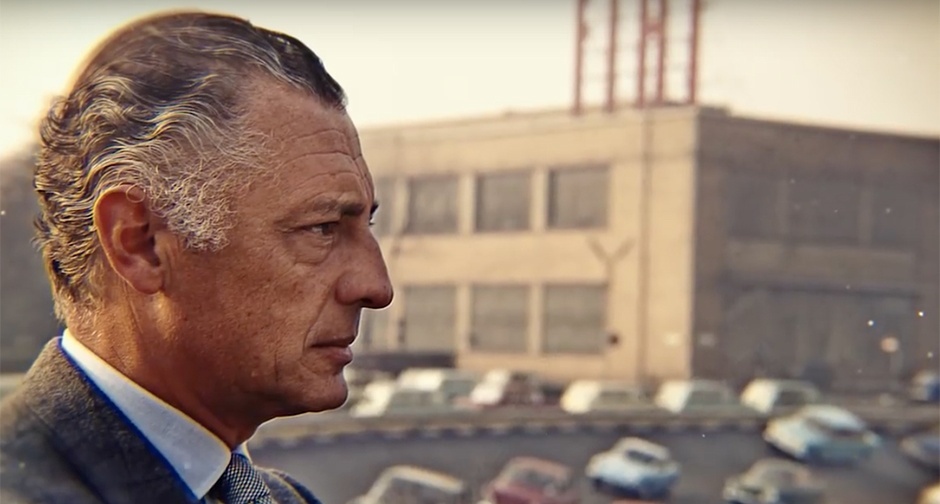
Agnelli lived to the best of his physical and economic abilities, enjoying life in all its declensions, including women. He was going to the office in Turin in a Fiat powered by a Ferrari engine, driving himself and often changing itinerary to shake his personal security. In the crosshairs of the Red Brigades but he didn’t care.
His companions were the legendary playboys of the 1950s and the 1960s, Aly Khan, Porfirio “Rubi” Rubirosa, Errol Flynn and Prince Ranieri of Monaco. “He was involved in all that Italians loved: sex, cars and sport,” his niece Isabella Rattazzi said.
Taki' Theodoracopulos, the Greek writer and magazine owner, writes a deeply personal tribute to the extraordinary life of his close friend Gianni - the Italian industrialist, flamboyant playboy, daring adventurer and insatiable gossip - who died aged 81 on 26 Jan 2003. “He was cool, was cordial, was not full of himself, nothing like that. Gianni Agnelli was the most powerful businessman in Europe. He elicited respect from the business world and aroused the interest of women everywhere. He was the trendsetter in that most style conscious of countries, Italy. Not only did he accomplish great industrial feats, he was also a legendary playboy.
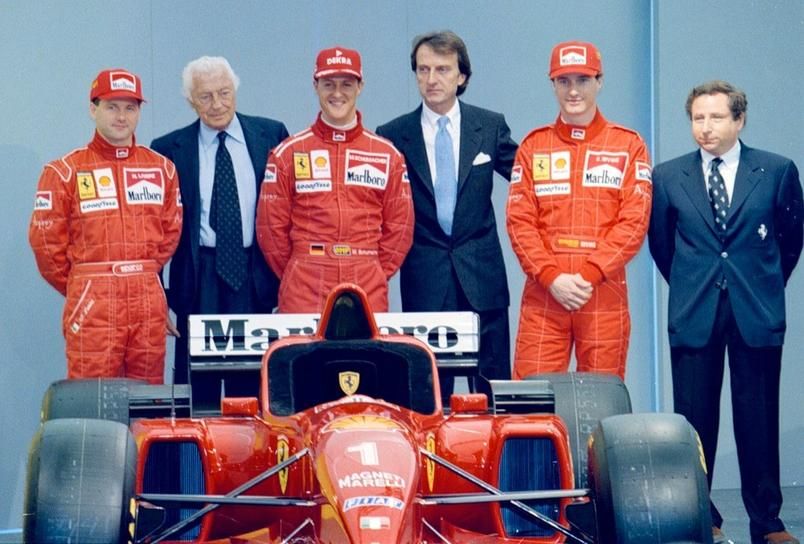
A latter-day Renaissance prince, a de facto king of his country (regarded by John Fitzgerald Kennedy “the king of Italy”), he had one of the greatest of lives and certainly one of the most exciting ones. Although both his parents died in accidents, Gianni continued to challenge the gods by living and driving on the edge. He survived tens of serious accidents, on the road, on the slopes and on the sea. But he died in his bed having battled cancer in the same valiant manner that the he had lived his life.
I met Gianni in 1958, when I was 21, and he was 37. Our friendship lasted 45 years. From personal experience, here's what it was like hanging out with him: tyres screeching, the dark blue Fiat 132 hurtles around a corner in a perfectly controlled four-wheel slide. Agnelli smiles maliciously as I, sitting in the death seat next to him, and his chauffeur, as usual, sitting in the back, both cringe simultaneously. The car is travelling through the centre of Turin at more than sixty miles per hour. It darts in and out of traffic, over double lines, into opposite lanes, jumping traffic lights.
Gianni has patrician looks, a deeply lined face and an almost perfect Roman nose. A deep suntan accentuates the crow's feet around his eyes. He is achingly handsome and impeccably dressed. When we reach a busy intersection, he brazenly goes through a red light, but the traffic policeman does nothing more than wave a greeting. At Fiat headquarters at Corso Marconi, Gianni steps out and, despite a very noticeable limp, walks briskly inside. The chauffeur wipes his brow and shakes his head. "Ah, é sempre cosi [It's always like this]," he tells no one in particular.
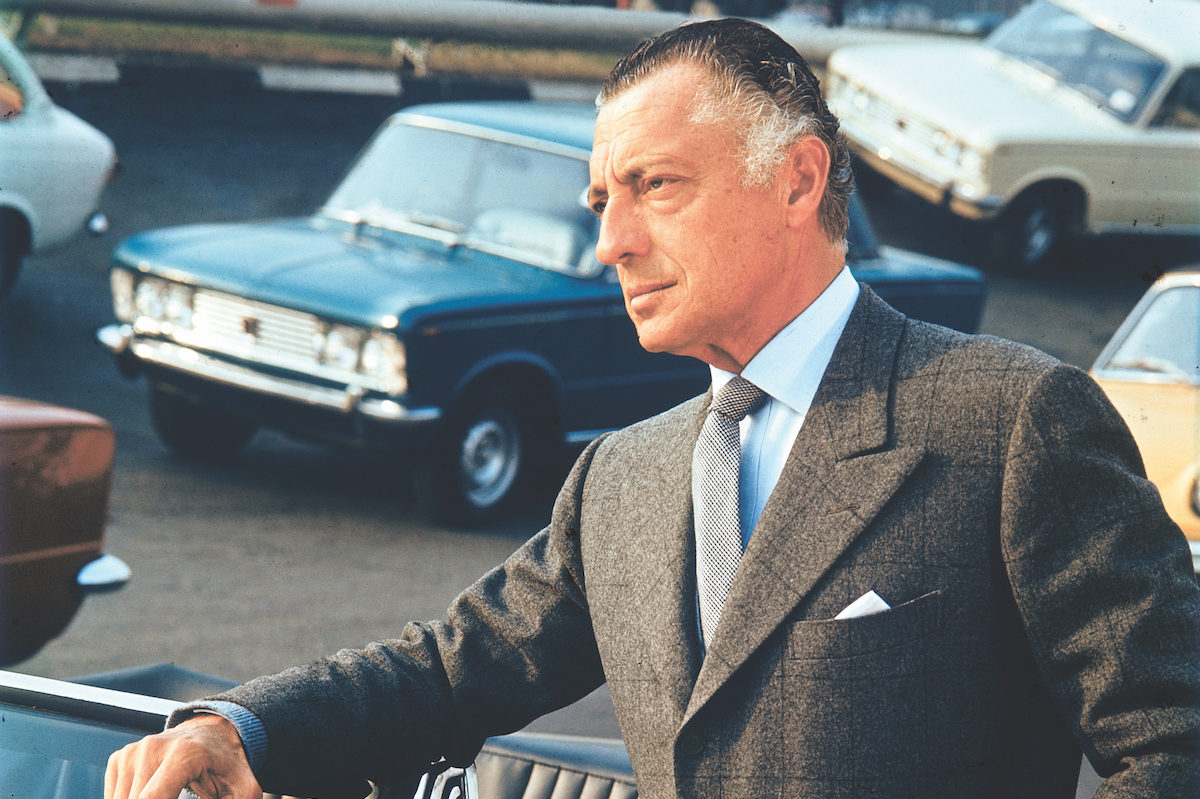
This was back in the early 1970s. The Red Brigades were running riot, businessmen were being kidnapped almost weekly, and many of the Italian super-rich had abandoned Italy for places such as Switzerland, Monaco and the United States, where their money guaranteed their safety. Not l'avvocato, as he was universally known in Italy. (In Italy it is a sign of respect to address someone with a title that shows he or she has passed an examination. Agnelli studied law. He, of course, could have been a prince or a duke, as both titles were offered to his grandfather, the founder of Fiat, by a grateful king for services rendered in the First World War. But the old man asked only that the state pay for the cars and trucks he built for the army).
Agnelli always refused to have bodyguards - "they talk and see too much," he told me - despite the fact that Italian terrorists had become a greater force than the state. When small businessmen and minor officials required at least two heavies, Gianni always went about completely unprotected. The government eventually foisted guards upon him, guards whom he more often than not managed to evade. His driving skills helped keep him in one piece. One captured terrorist testified that he'd had Agnelli in his sights numerous times but was incapable of getting off a shot. L'avvocato was too fast for him.
When Gianni befriended me in the late 1950s, his romantic feats were legendary, as were his houses, boats, style of entertainment, and art collection. His unique personal style, his dash and his looks, made him my idol immediately. Everyone in his close circle - and many outsiders, too - aped his distinct way of speaking, his dress, and his habit of wearing his watch over his shirt cuff. Not many succeeded. I think David Somerset, now Duke of Beaufort, and I were the only people who realised that there was no point in trying to ape him. He was inimitable.
.jpg)
Gianni's sailing boats were true beauties, like his women. No article about Agnelli - and there have been hundreds, if not thousands - has failed to mention his dealings with the opposite sex. Although happily married to a Neapolitan princess, Marella Caracciolo, for 50 years, Agnelli was a true Italian of his time. Before his marriage in 1953, he dated every known actress and model of post-war Italy, not to mention a few princesses of his class. After marriage he became the soul of discretion, but did not change his ways.
Anita Ekberg at her peak was one of the many stars he bedded, and he continued his womanising until close to the end. Someone once dared to ask him how he justified it. “I’ve known faithful husbands who were really bad husbands and I’ve known unfaithful husbands who were very good husbands. I don’t think the two things go necessarily together” was Gianni's careful answer, and the subject was changed.
He was a paradox among businessmen, neither quoting figures and profit margins nor taking himself seriously. He was receptive to ideas rather than detail, and his forte lay in strategy and in delegating authority. He was also a paradox among those who like a good time. He could not suffer fools, although he was among the world's most polite men. Although friendly with celebrated playboys of his time, such as Aly Khan, Porfirio Rubirosa and their ilk, these were friendships of the night. And the constant pursuit of pleasure bored him.
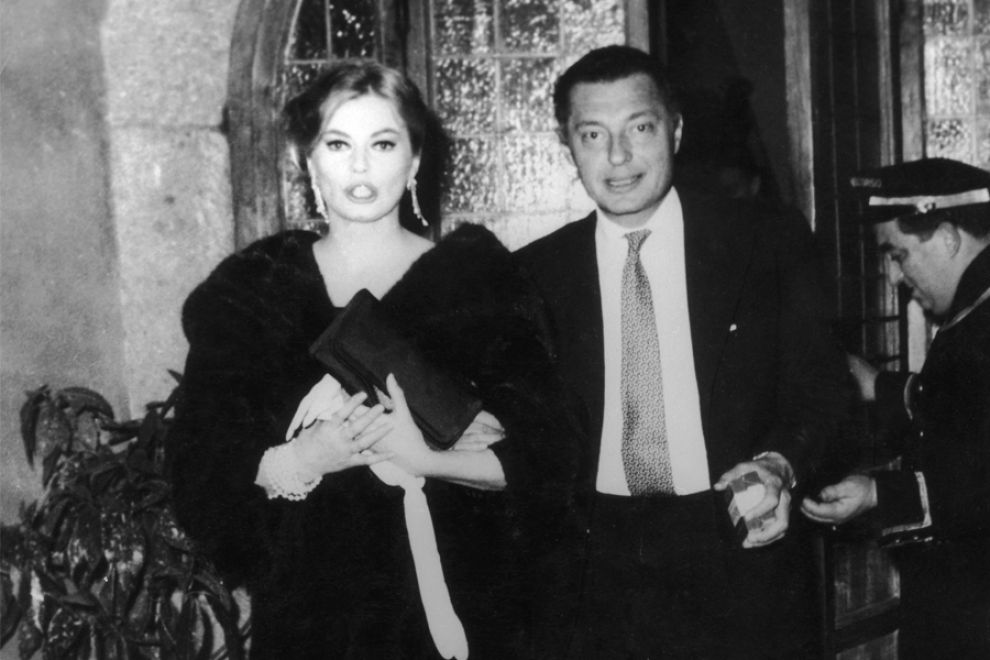
Strangely, at heart he was a hard-working bourgeois. In 1963 he realised that the Riviera life was over. He sold his palatial Leopolda villa, bringing an era of extravagant entertainment to an end. In 1966 he was elected chairman of Fiat and proceeded to take the family company into the multinational league.
Born in Turin on March 12, 1921, he was the favourite grandson of the founder of Fiat, Senatore Giovanni Agnelli. Although exempt from military service during the Second World War because he was deemed vital to industry, Gianni nevertheless volunteered and spent five years as a cavalry officer. He saw action on the African and Russian fronts and was awarded the Cross for Military Valour.
I remember an incident long ago in the casino of Monte Carlo. Gianni was playing chemin-de-fer for very large stakes. The hour was late. A woman sitting behind Gianni was spotted stealing his chips and was arrested when she tried to cash them in. Agnelli, however, insisted that he had given them to her. The next day, on his boat, someone told me how much Gianni disliked the woman. That was l'avvocato's style. He knew that some were not as fortunate as others. Just then Gianni came on deck, and the discussion turned to what constitutes style.
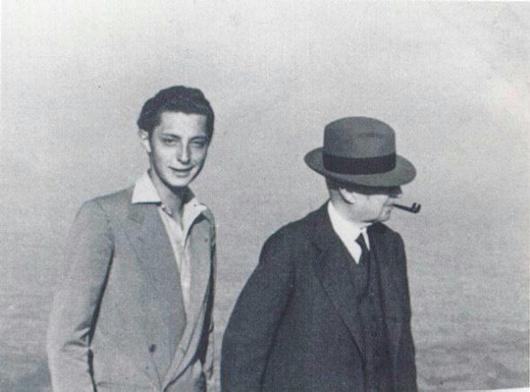
He began to relate a story set in Tripoli, Libya, during the war. A German soldier, he said, was sitting in a bar for officers in the company of a Levantine beauty. The couple was approached by a young Italian officer, who began flirting with the woman. The German was polite, up to a point. After all, they were allies. But when the Italian gently put his arm around the lady of the night, the German, without saying a word, discreetly took out his side arm and shot the young Italian through the foot. All three remained seated, and with all the noise and merriment, no one realised that a shot had been fired. After a minute or two, the Italian excused himself and smilingly retired. "That's what I call style," said l'avvocato. "The German never raised his voice or made a scene in public." Years later I found out that Gianni had been the Italian who had been shot. If anyone had shown more style than the German, it was Gianni.
After the war, while Fiat was rebuilding, Gianni spent a lot of time on the French Riviera, back then still a magical place, making up for lost time, playing hard all night, flying to Turin in his Dakota at dawn each day. He had set up house with Pamela Churchill, then married to but separated from Randolph Churchill (she later became Mrs Averell Harriman). Pamela was very jealous. One night she caught Gianni in flagrante and ordered him out of his own house. While driving the young woman, Anne Marie d'Estainville, back to her house in Cap Martin, Agnelli had an horrendous crash.
Gianni had been mixed up with drugs, he was using them a lot when he was young, he called them “the big white nights”. He was trapped in his Ferrari, yet he requested only that the woman be protected from prying eyes. The crash crippled him for life. He had to give up riding, in which he excelled, although he continued to sail and ski. On the slopes, he wore a brace and a knee-length boot on his right leg, used two small skis, and relied on two tiny skis attached to his poles. Speed was of the essence. He skied ferociously, in an almost obsessive manner, as if to stop would bring on boredom.
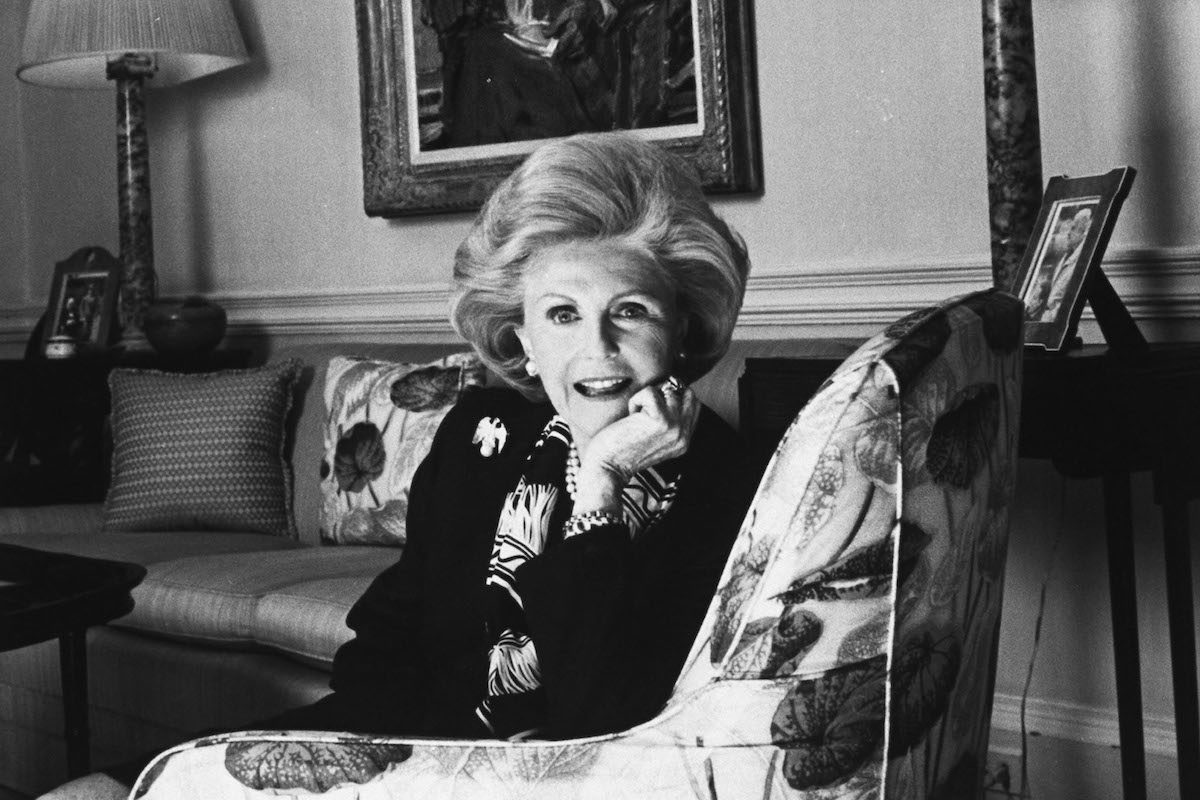
Agnelli's low threshold for boredom was the key to him. Throughout the years I've known him - sorry, knew him - I don't remember once hearing him make a silly or boring remark. He was always on the look out for gossip. He woke up very early, and would get on the telephone. "Tell me everything" was his usual opening remark. David Beaufort was always among the first to be woken, and to my eternal discomfort I came after that. "You sound awful, Takilino, tell me what happened last night. Were the tarts pretty?" . . . and so on.
Back during those halcyon days, when we would go sailing on his beautiful but Spartan boats, he would recount funny and extraordinary stories - but never about himself. God, how I shall miss those days; the beautiful Agneta ready to hoist sails, l'avvocato arriving in a hurry, asking, "are the tarts all on board, let's bugger off!"
We all know that riches, style, good looks and great intelligence do not necessarily bring happiness. Gianni was restless throughout his life, but the last 10 years brought peace - until, that is, the suicide of his manically depressed son, Edoardo, in 2000. I believe that tragedy hastened his own illness and death.
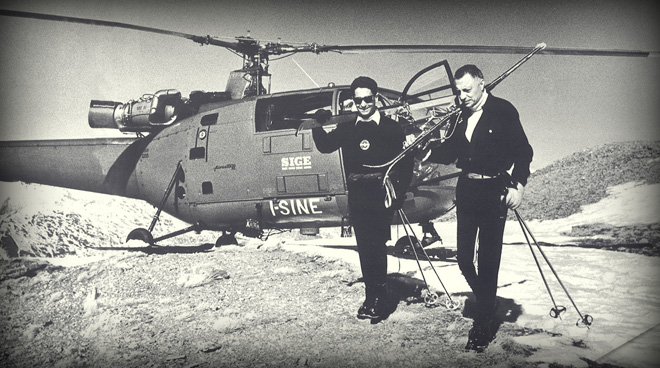
I do not know what lay at the core of his soul, nor can I explain his "Rosebud". Was it the white and black jersey of Juventus, the team the Agnelli family owns? Was it the tiny Bugatti he played with as a child? The roar of his victorious Ferraris, or the smiles of the countless women who loved him? Or the rust-coloured sails of his beloved Agneta cutting silently through the blue sea? One will never know. What I do know is that I was very lucky to have been his friend.”
The habits of Giovanni Agnelli are also discussed in the paper “Il gioco dei potenti” by Piero Ottone: “On really sunny days he eats breakfast in the garden, even in winter, maybe after a morning spent on the snow fields; the helicopter will land on the lawn right after naptime, Agnelli wakes up early in the morning, at five or six, reads the newspapers, telephones, establishes contacts with half the world, then he goes to bed and sleeps till about 15,30.”
In the book we talk about the Avvocato’s private life on a hill, “inhabited by butlers and servants who appear only when necessary, quiet, faultless, always the same ones, they have now a certain confidence with bosses and with guests, but the confidence is written in their bearing and in the looks, not in the speeches, because of course, they don’t talk.”
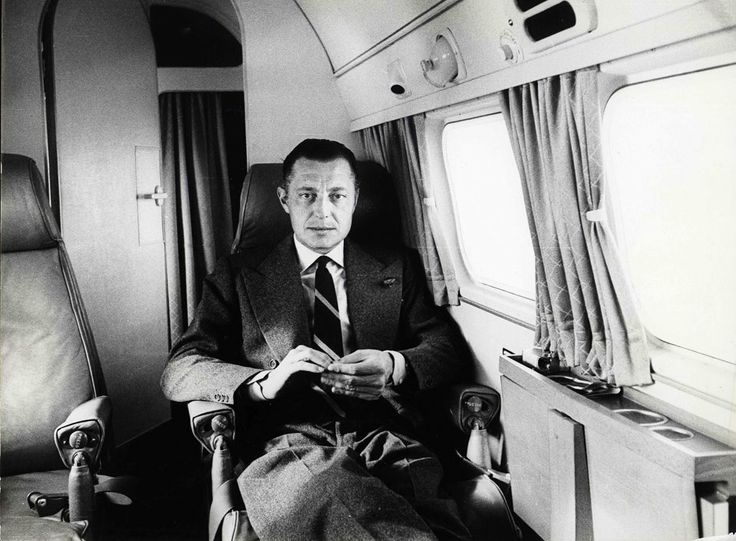
The borders between life and work are tenuous: “life’s a continuous departure, on a plane or in an helicopter, one never knows precisely whether destination is a business meeting or a sky slope (or, as he says “da sky”). The center is Turin, loved like you love old habits, even if they are boring.”
But Agnelli also has a house in Rome (the top floor of a solid building in front of the Quirinal), in Saint-Moritz and “another small one in New York. “The French Riviera was always in ferment when Gianni was arriving. On the Riviera you were living in a carefree manner. It was quite a libertine atmosphere in a way. Everyone was there, from Somerset Maugham to Elsa Maxwell, to Ranieri and Grace, Ari Onassis with his yacht. It was like a huge private party,” Lee Radziwill, John Fitzgerald Kennedy’s sister-in-law said.
Gianni had purchased La Leopolda, a really big residence with luxurious parlors one after another, gigantic and built on different levels. Marella (“the girl with the longest neck in Europe” David Landes, Author Dynasties, said) and Gianni were receiving all, kings, heads of state. “They were considered to be the most important couple of all the couples in the world. You know at the time when an American wanted to be up to date he imitated style and everything about the house of Agnelli. Everyone was trying to emulate Gianni Agnelli,” the designer Valentino said.
“Being invited to the home of Gianni was one thing that everyone would have wanted and Marella had furnished the house excellently,” Gianni’s sister Maria Sole told. The “Avvocato” had great taste, he was obsessed with the aesthetic, he always had this really huge knowledge when it came to painting.
“He invented vanity,” his friend Marina Branca said, “he invented it. He loved being Gianni Agnelli. He liked that all would adore him.”
Jas Gawronsky, one of his friends said: “style was life for Gianni, style was everything. The way in which he dressed was very distinctive, it was always really beautiful and he just really wanted it.”
And another friend concluded: “we are talking about a man who, despite a completely destroyed leg and the brace, was skiing with great elegance and was always faster than anyone else. And that grace belonged to both he and Marella. This was something that everyone around them was trying to imitate.”
Jacopo Mola spoke about Gianni Agnelli, the gentleman from another time. When we talk about style, class and male elegance we have to know that with those requirements you were born and who doesn’t have them can hardly acquire them. For me style represents your business card, is the ID that reflects your own personality. The word fashion, which comes from the Latin “modus”, means manner, time, standard and is prompted by the man’s need for cover himself. Over the centuries the suit has had a social function which made people being distinguished in social groups and fashion became the conduit in order to highlight your own personality.
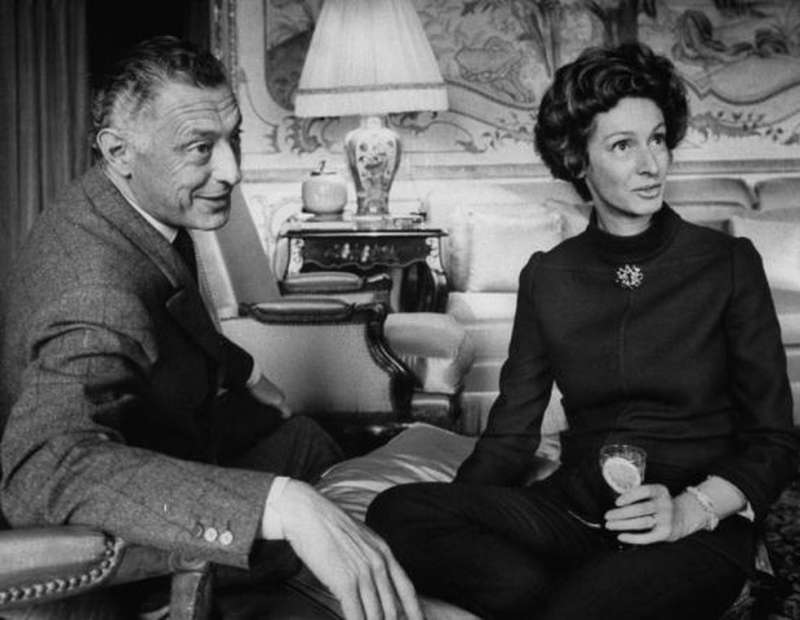
Agnelli, who personality had in spades, found himself one day in his Ferrari 375 America Coupé in the company of Marina Branca, who told: “he had a new and wonderful Ferrari, metallic painted, green, beautiful, something to run out of air. He asked me, do you come? I couldn’t resist, I said yes. It was foolish, I was always trying to avoid it. We crossed Nizza at a speed that in my opinion was crazy. Of course we’ve been pulled halfway and I said “thank God” and some carabinieri have arrived and told him: “avvocato! But do you think that you have to come in this Ferrari to run through our streets? On this one we let you go, but, while we’re at it, can we see your car? It has amazing interiors, you have charm and style in spades, red leather seats are beautiful!”
Gianni Riotta, a journalist working for La Stampa said: “he was a very brave man, and nearly touching, yes, a suicidal tendency.”
Henry Kissinger confirmed it: “it was dangerous to think something in his presence because he would have perceived it. He appreciated the courage just as a principle and was training it every day driving his car. It was really a frightening experience.”
Anna Mucci, his former lover, said: “he was totally insane. Policemen, one-way streets, meant nothing to him. I thought I’d die.”
Marina Cicogna, Gianni’s friend, concluded on the subject: “he was always running a red light not looking around. If you see it done in a movie you don’t think it’s possible but with Gianni it was. I told him: “listen, you son of a bitch, if you want to kill yourself in the mountains there’s no need to take other people with you. I’m not talking to you all day.”
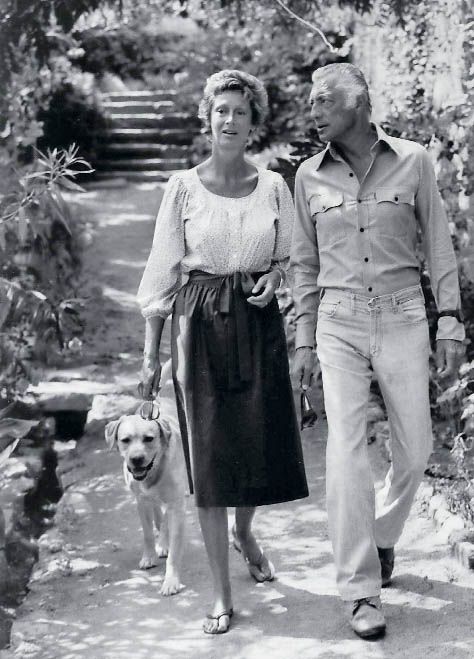
On a sailboat he loved to pass in the eye of the storm through the Strait of Bonifacio, in wintertime he loved to go to St. Moritz in Switzerland to practice the “Cresta Run”, launching himself with a toboggan in an ice rink reaching the speed of about 160 kilometers an hour. But one of the things which he liked the most was that of getting to Antibes to inaugurate his weekend and launching himself from the helicopter in the Mediterranean Sea. in front of the Hotel du Cap.
Great lover of formalwear and sartorial clothing, Agnelli has had hundreds of custom clothes made by the best tailors. Aristotele Onassis and Stavros Niarchos thanked him all the time telling him that he taught them how to live. They took him as an example to furnish their houses, to design their yachts or private jets, they imitated him to romance a lady and even in the way he dressed; it’s well known that, when he was in Monte Carlo, the Avvocato used to take his tailor on the yacht “Christina O” of Ari Onassis. Gianni at sunrise in port, especially on his Capricia, wore an intermediate item of clothing between elegant and sport, with a double-cuff shirt and a pair of jeans. He liked the blazer, that kind of double-breasted jacket with fine fabric and gold buttons but he was wearing them black. Aristotile was just nuts for the blazer, he loved to have it designed by Tommy Caraceni and was getting ideas also from Gianni.
Five days a week Agnelli went from a bespoke suit to another, as he found himself every day in situations which required a more rigorous dress code. Among his cult clothes there were the classic smoking, tight, frac which he liked to rock at the Scala in Milan or at the grand gala of singing or charity, which he used to do often. In wintertime he wore the classic gray flannel suit with double-breasted and extra large revers jacket; in the summertime, instead, he favored the solaro suit with a Neapolitan jacket in beige colour. Throughout the year he liked Prince of Wales jackets.
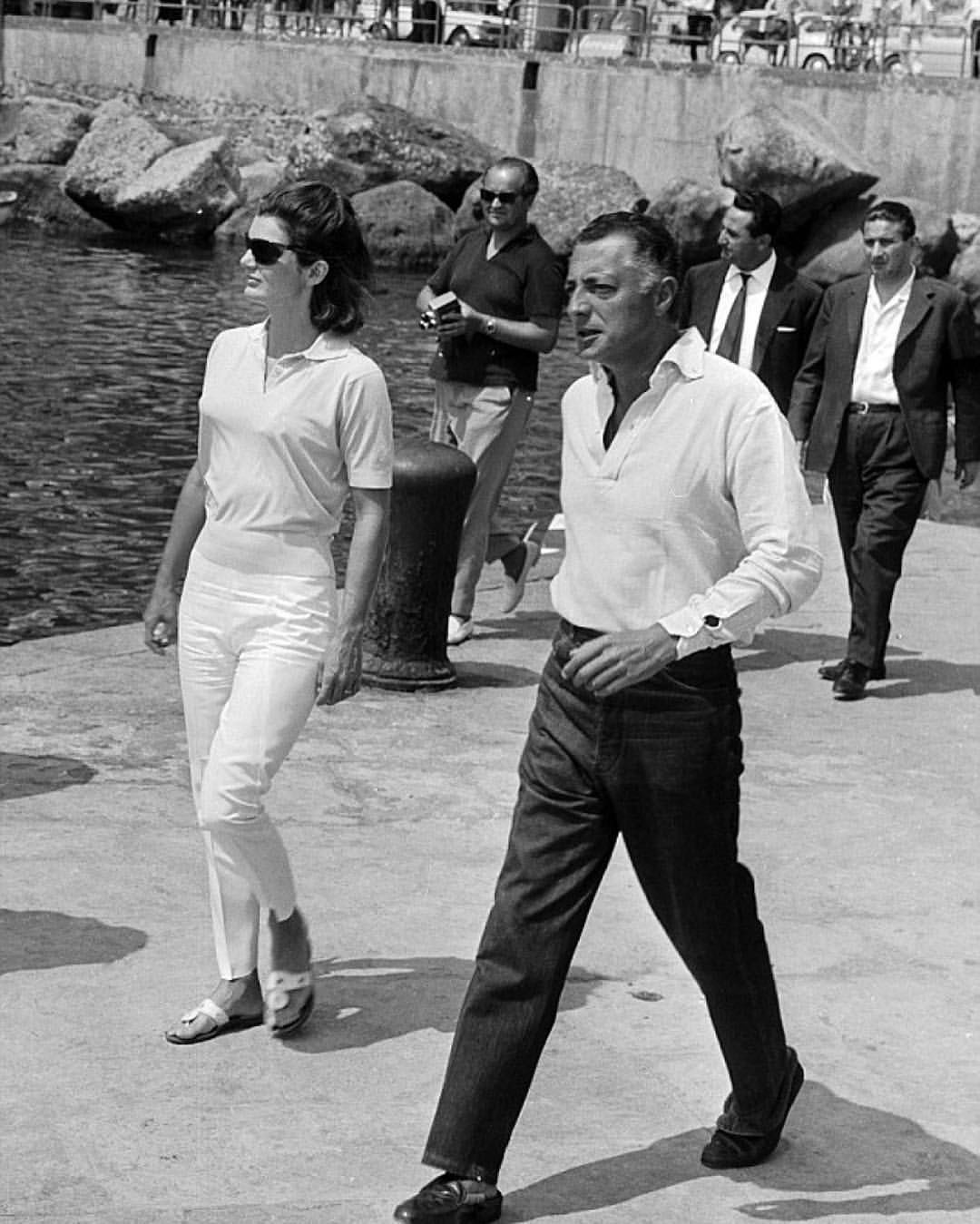
In the first part of his life Agnelli wore classic shirts with French collar and chamfered cuffs, but in the mid-Seventies, he had different ones. Colours were always two, light blue and white, but about the collar he started to choose almost always the unbuttoned button-down version of it. Difficult to see him wearing striped or plaid shirts, or bright colored ones. His favorite shoes were Tod’s and Church’s.
In the early 1980s, in his free time and on the boat, he was showing his Rolex Daytona. His perfume Zino Davidoff was strong but at the same time sweet. His passion for the American style sportswear has probably been influenced by juvenile friendships overseas. In New York he used to spend the weekend in places like Cape Code along with all the local upper bourgeois.
Gianni often said that “ladies were to be treated as sluts while sluts were to be treated as ladies.” He was a lover of the real femininity, the classical feminine ideal that it’s hard to find today and he really knew about classy ladies! Among others the designer Jackie Rogers, Anita Ekberg and Diane Von Furstenberg, his flirts were unique. The women liked him because he wasn’t like the other men, he was always smiling, was funny and, even though when he was young many people just called him mad, his class was insuperable and a woman next to him felt like a true queen.
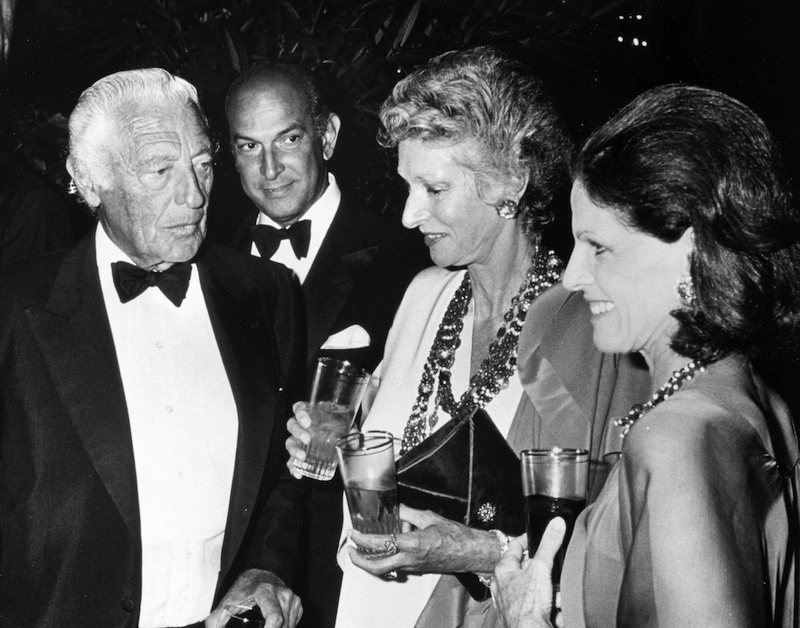
He had it all and knew how to share it with other people in an euphoric manner, it was impossible not to be fascinated by him. Already at that time the women were saying that men were boring as hell, that they were obsessed with making money… For Gianni every woman was to be hold on the palm of his hand.
Jackie Rogers said: “to have an affair with him it was impossible because he was a little bit of a madman and loved the nightlife, but I liked him very much because he was different than all the other men, the avvocato was funny, exciting, a living person, pure! People around him were always fascinated by him, the avvocato, it was crazy, it was a real madness.”
Giulio Marconi, inseparable cook, didn’t like the boat and preferred to keep on working at his villa, but Gianni wanted him necessarily all to himself: “I told him, I’m a mountain man, I say avvocato, I’m not a man of the sea, I’m not coming because I get seasick. And he told me: “no you have to become an old sailor, a sea wolf.”
On the boat, Giulio said, Gianni was: “always naked, always naked. He was great.”
And again Marconi about hyperactivity of his boss: “as soon as something came to his mind, let’s start now, let’s go.”
Were saying in this regard his butler Stuart Thornton: “he had an immoderate appetite for life. In the end of the day your mind was foggy. As you had gone to Rome, to Venice and to Paris and then coming back home” and Ginevra Elkann, the avvocato’s niece: “when he was around life was faster, everything was electric.”
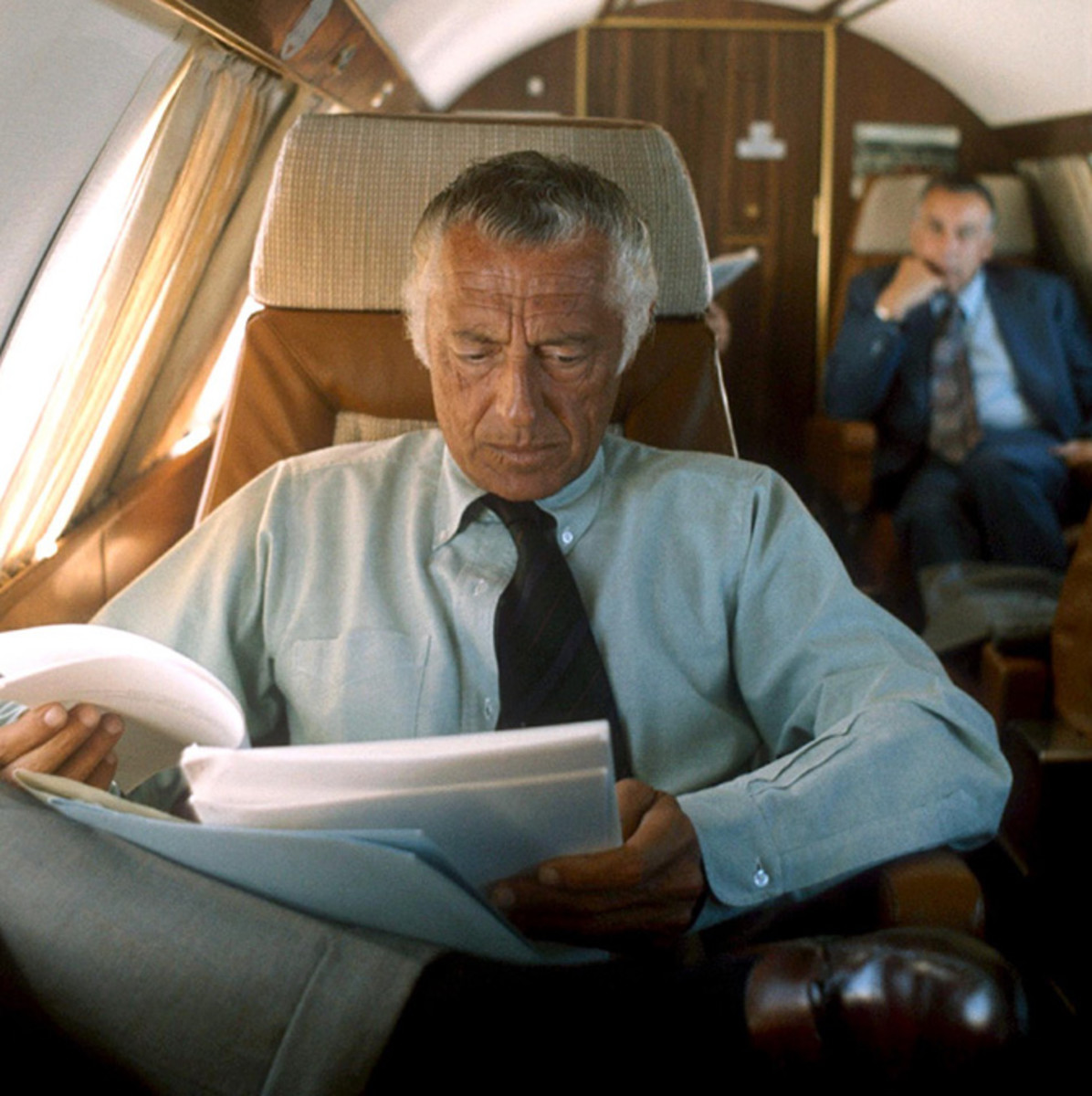
Gianni’s friend Jean Pigozzi kept talking about this subject: “I had a house on the French Riviera, and he called me at six in the morning to ask: “what’s the sea like?” Gianni I have no idea. And he said: “go and look” and I looked out and told him: the sea is wonderful, and he said: “are you sure about that?” And I answered: of course. “My captain said that the sea is choppy, he never tells me the truth.” And I went back to bed, then I heard a knock at the door and he was there. He had landed in my house with his helicopter at 6:00 and told me: “come on, let’s go out on the boat.”
And again Jean: “go, go, go. Lunch in Rome, dinner in Paris, then he came back to Turin and in the morning he flew to Germany. Always on the move, he drove fast, he went fast.”
Lupo Rattazzi, Agnelli’s nephew concluded: “the worst part was to go back to your life, it was terrible because when you were with that man you were living like James Bond. And when you had to get back to your life it was something disappointing.”
Gianni loved women (“he had a love nest everywhere” his friend Marina Cicogna said), but his heart was given to one only, his wife Marella Caracciolo di Castagneto. They first met after the war, Marella was part of the Neapolitan aristocracy, definable almost like a royal family. The avvocato was also showing heart and feelings which made many people love him. If you ask some of the old people to tell what was the atmosphere in the ‘80s, ‘90s in Turin, the answer was unanimous: “when he was there you felt like eternally living in the Dolce Vita.”
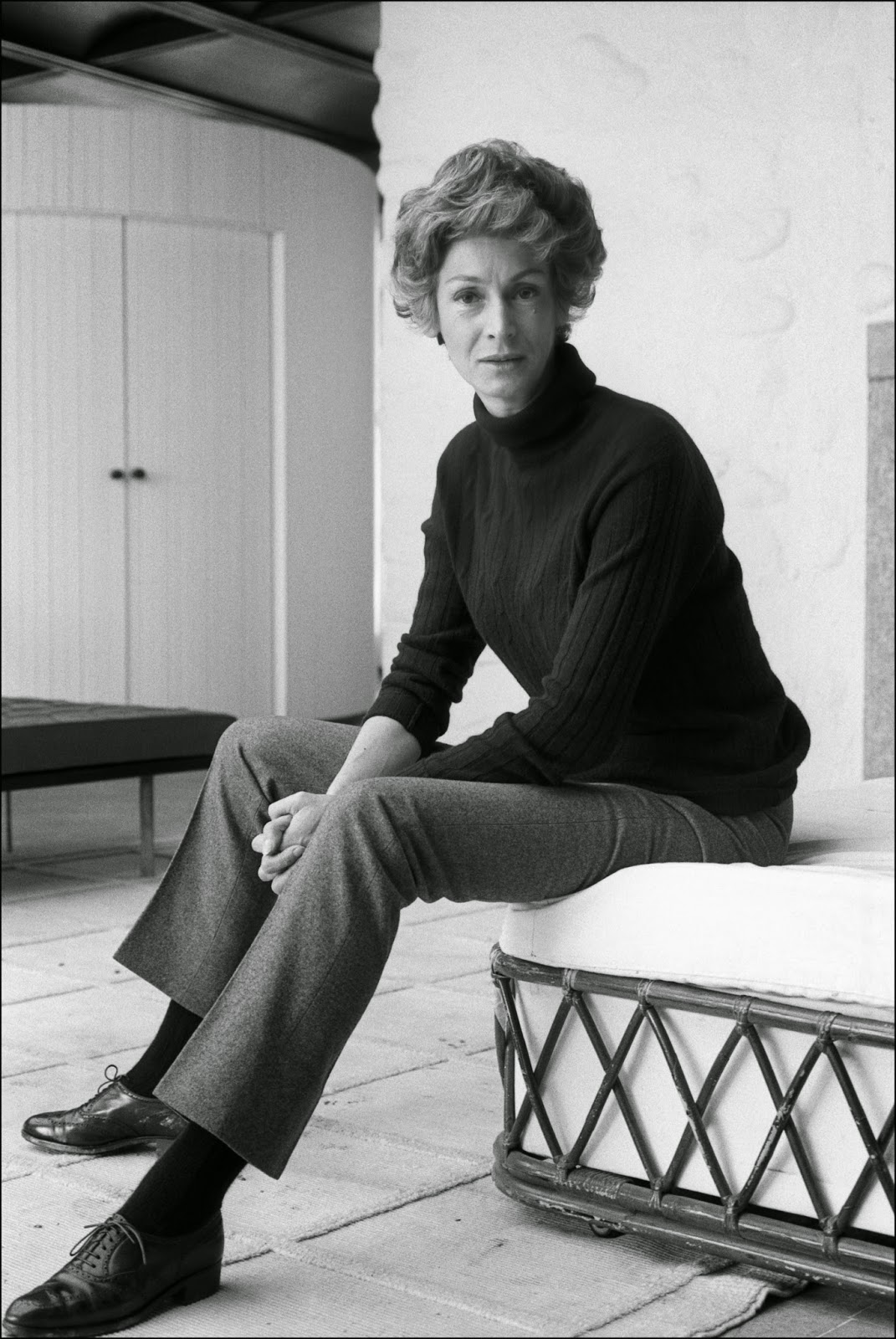
A 87 years old Fiat worker said instead with his eyes moved: “the avvocato cared more for his employees than for Fiat, the Fiat were his own employees, when there was the period during which they had to let them all be on layoff, in the morning when I opened the offices I found him at 5:00 behind the desk holding his cigarette. He was worried, for him his employees were like brothers, three years before he died every time he passed by the newsstand between via Nizza and via Madama if he met us he bought the newspaper and would end up talking with us about Juventus and he kept the driver waiting in the car, he will always be a unique and unforgettable man!”
Towards the end of the documentary on Sky Atlantic, 15 years since Agnelli died, the words of Lapo Elkann, son of Margherita Agnelli and nephew of the Avvocato, in their spareness sounded horrifying: “I think he was a wonderful grandfather, but I wouldn’t have wanted to be his son.”
Reinaldo Herrera, Gianni’s friend, confirmed: “no one said that he wasn’t evil, he was very evil, it was always part of his great charm.” Also the witness about uncle and cousin Edoardo of Lupo Rattazzi, son of Susanna Agnelli, was clear: "we were having lunch, at some point Edoardo said something, and Gianni talked back to him, dismissive. And I thought that I couldn’t believe that, after so many years, that relationship was so frayed by the lack of respect of the father towards his son.”
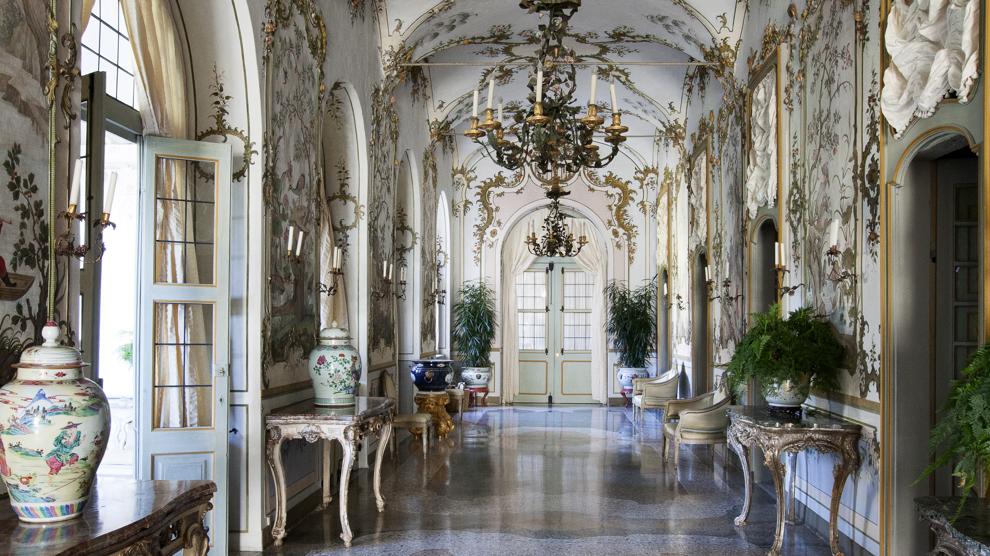
Three days later, on 15 November 2000, Edoardo Agnelli committed suicide jumping off a 80-metre high road bridge on the Torino-Savona highway. Giulio Marconi said: “so I told him, avvocato, I tell you, some of the blame has to be put on you. Edoardo for me was a great guy, the father had little faith in him, and he, seeing that, did what he did.”
Tiberto Rodrigo Brandolini d'Adda, nicknamed Ruy, son of Cristiana Agnelli and Edoardo’s cousin, seemed to be moved: “Gianni was utterly devastated. He told me: 'God, you must have great courage to jump off that bridge'. Yes, Edoardo did it to show his father that he had courage.”
Nicola Caracciolo di Castagneto, Carlo and Marella’s brother, the avvocato’s brother-in-law, was moved: “after Edoardo’s funeral, in the house of Villar Perosa, Gianni told me: “we should never forget that this has been a happy home, but this now is not a happy home.”
His sister Cristiana said: “I saw him a month after Edoardo died. He was very, very sad. I didn’t recognise him.” After the suicide of the son who he didn’t know how to love, Agnelli went into an undefeated depression and in the disease which will kill him two years later, on 24 January 2003.
“He fell into a state of I guess deep depression and it was very sad because you had in front of you a giant, an extraordinary man, a man that you thought would never die, completely broken”, Lupo Rattazzi said.
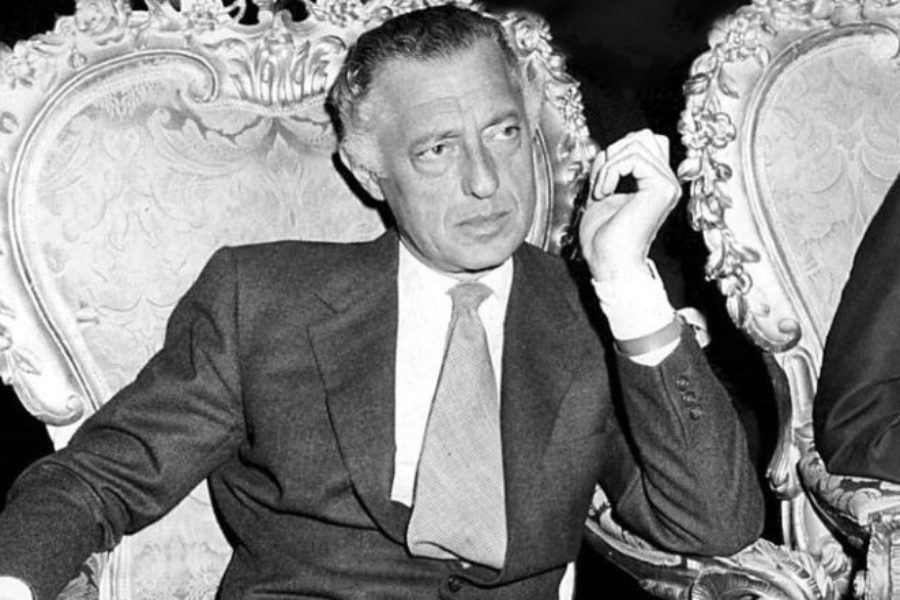
Nick Hooker’s documentary, with which the TV channel Sky Atlantic recalled Mr. Fiat, was sober like his title (Agnelli) and, with some omission and historical ingenuity, filled a singular gap. Around this man, central in Italian history of post war, there was a wall of silence.
Thirty years ago Agnelli instructed Roger Cohen, a reporter of the Wall Street Journal, to write his biography, told him hours of confidences and then changed his mind, paid him and kept the book.
In 2008 John Elkann hired Vendeline Von Bredow, a journalist of Economist, to write an authorized biography of his grandfather. Two years of work but even that book was never published. People talk about a memoir by Gianluigi Gabetti, one of the closest managers to the Avvocato, printed and never published. Then there is historian Giordano Bruno Guerri, always hired by Elkann, who is working on a new authorized biography which however seems to be having trouble being published. “Agnelli l'irresistibile” by Marie-France Pochna dates back to 1990 and is impossible to find as well as “Tutto in famiglia” by Alan Friedman (1988). Inexplicably, then, Mondadori didn’t publish the recent (2007) “Casa Agnelli” by Marco Ferrante.
In this desert of documentation about the history of Agnelli, the movie by Giovanni Piperno “Il pezzo mancante” is the exception. It deals with one of the most embarrassing subjects for the family, ignored by Hooker: the story of Giorgio Agnelli, the brother of Gianni, suicidal in a Swiss asylum. Hooker’s work, is apologetic in tone but ruthless in substance. There is before and there is after.
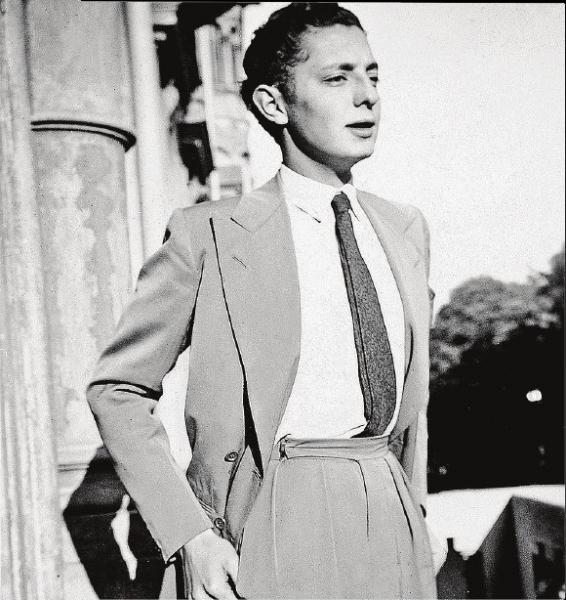
The before is the story of a boy, born in 1921 in Turin in a super rich family, who loses his father at 14 and ends up with six sisters and younger brothers. They were actually adopted by their grandfather, Senator Giovanni Agnelli who, after the Liberation, was removed from his Fiat as a collaborationist and, according to legend, died of a heart attack due to this. The factory was run by the manager Vittorio Valletta who told Gianni, the owner, based on the recollection of Maria Sole Agnelli: "have fun and when it’s time I will give you back the Fiat". His sister, hilarious, commented that Gianni really “had fun!” He became president of the Fiat in 1966, at 45. The before and the after however are connected.
The Avvocato, father of the nation in the 1970s and 1980s was the same man who, his sister Susanna said, had read a single book in his life (“The old man and the sea” by Ernest Hemingway), published however when Gianni was not in his 30s: “he prefers to live rather than reading.”
The life of Gianni as a young man? “Girls, cars and girls, these were his passions,” smiled delighted Maria Sole. “Women were in love with him and men wanted to be like him. Gianni was irresistible, it was not possible not to become seduced by him, it was not possible,” Diane von Fürstenberg, ex-wife of Egon, son of Clara Agnelli, said.
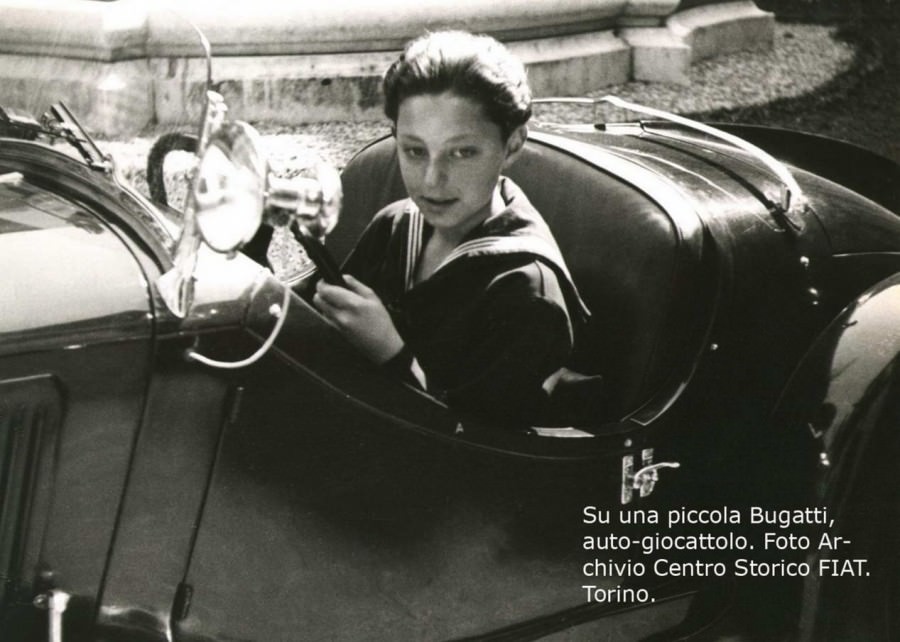
A madman, Carlo De Benedetti suggested: “I often went in the car with him, a terrible experience, really terrible. He was always driving like he was racing in Formula 1 but we were in Turin.” A turbulent erotic life.
The designer Jackie Rogers told about the night in which in a hotel she found him sleeping with Anita Ekberg, it’s not clear whether it was before of after the marriage with Marella Caracciolo, but maybe it’s clear. Surely that marriage was preceded by a five-year relationship with the roaring Pamela, a year older than Gianni was and ex-wife of the son of Winston Churchill. Pamela wanted to marry him but the Avvocato’s sisters, and maybe he too, didn’t like her. The relationship was very expensive for Gianni. He bought her a penthouse in the most exclusive area of Paris with domestics and chauffeur at her disposal.
But on a night in 1952 in the French Riviera Pamela caught him with the young Anne-Marie d'Estainville, going hysterical and notifying the girl, not keeping her voice down, to consider her “a bitch.” Gianni and Anne-Marie, their friends told amused, decided to escape from the terrible wrath of Churchill’s ex daughter-in-law and jumped in Gianni’s Ferrari flying full throttle into the huge accident (seven fractures of the leg) that will leave deep marks on Agnelli for the rest of his days.
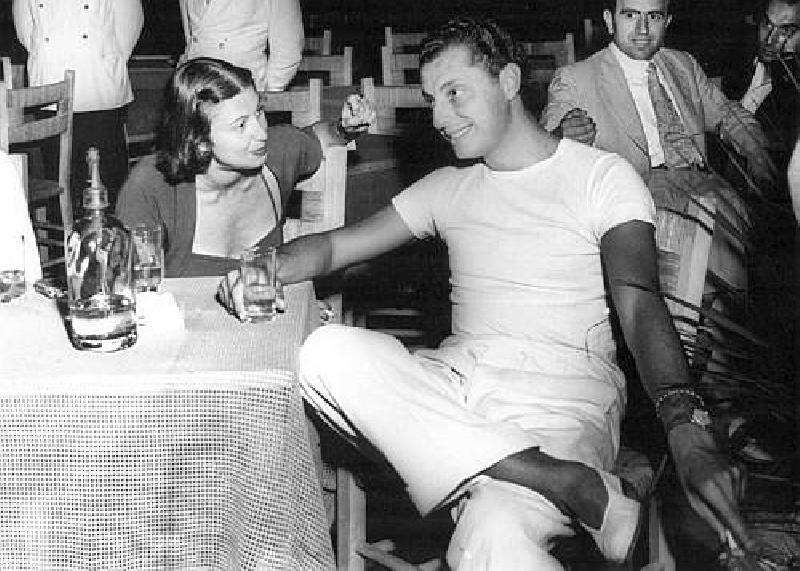
“He was full of drug,” his true friend Taki told, blatantly touching his nose as if to say that Agnelli was into cocaine. At this point his sisters decided that the right woman for Gianni was Marella, six years younger than him and, they said, who has been in love with the “reprobate playboy,” as defined by Maria Sole, for years. The same Maria Sole swore that his brother “was really in love with” the woman he married in 1953.
Marella featured permanently on the charts of the most elegant women in the world and was a celebrity in the field of gardens. She has written three books on the subject. A very private person, she was a woman in pursuit of her husband. For her the couple was ahead of family. She said about her husband: “for Gianni the woman has to be seduced. He doesn’t fall in love with you,” but she was talking about the other women.
“Gianni had characteristic faults of Italian: of my father, of my brother Carlo. He taught me to enjoy life. A reason why I love my husband’s family is that they are convinced that life is to be enjoyed, it’s not just duty and atonement.”
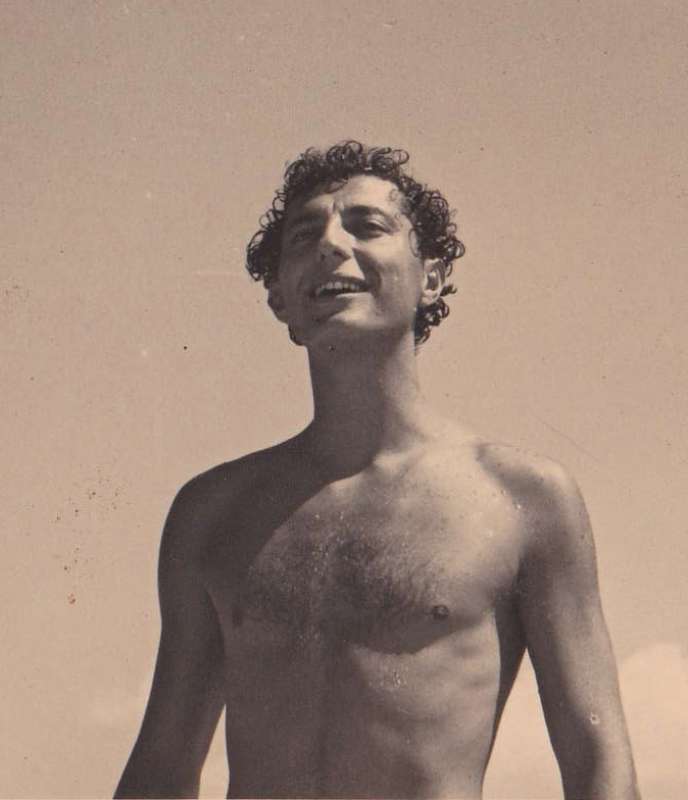
The chalet Chesa Alcyon, close to St. Moritz, purchased in the early 1970s, became Marella’s favorite spot. Near the Mount Suvretta, with a bird’s eye-view of the Maloja lake, it was the house where she was spending more time, devoting herself to her work, her beloved husky dogs and “what is one of our greatest luxuries of life: reading.” Marella’s favorite thing was to make houses and gardens beautiful. She bought and made magnificent a property of 26 hectares near Marrakech. And, like the Chinese sages say, “a human being achieves perfection when manages to make his own garden.”
The Caracciolo family didn’t appreciate Gianni: “my mother didn’t like him, she didn’t think he was a good husband. She said he was a terrible man,” Nicola Caracciolo recalled. It is assumed that Agnelli would have included among his sexual prey even American first lady Jackie Kennedy while on greeting-card vacation in Capri in the summer of 1962, with the Avvocato (already married and father of two) doing the luxurious honours and John Kennedy in Washington to take care of the fate of the world (and possibly also of that of his lover Marilyn Monroe, died by suicide just in those weeks).
Here Maria Sole’s happy trust in non fraternal tendencies of her brother towards the Kennedy family (“I wouldn’t be surprised of it”) was suspended between admiration and contempt. This golden youth which only thought about having fun was cruelly portrayed by the same veterans.
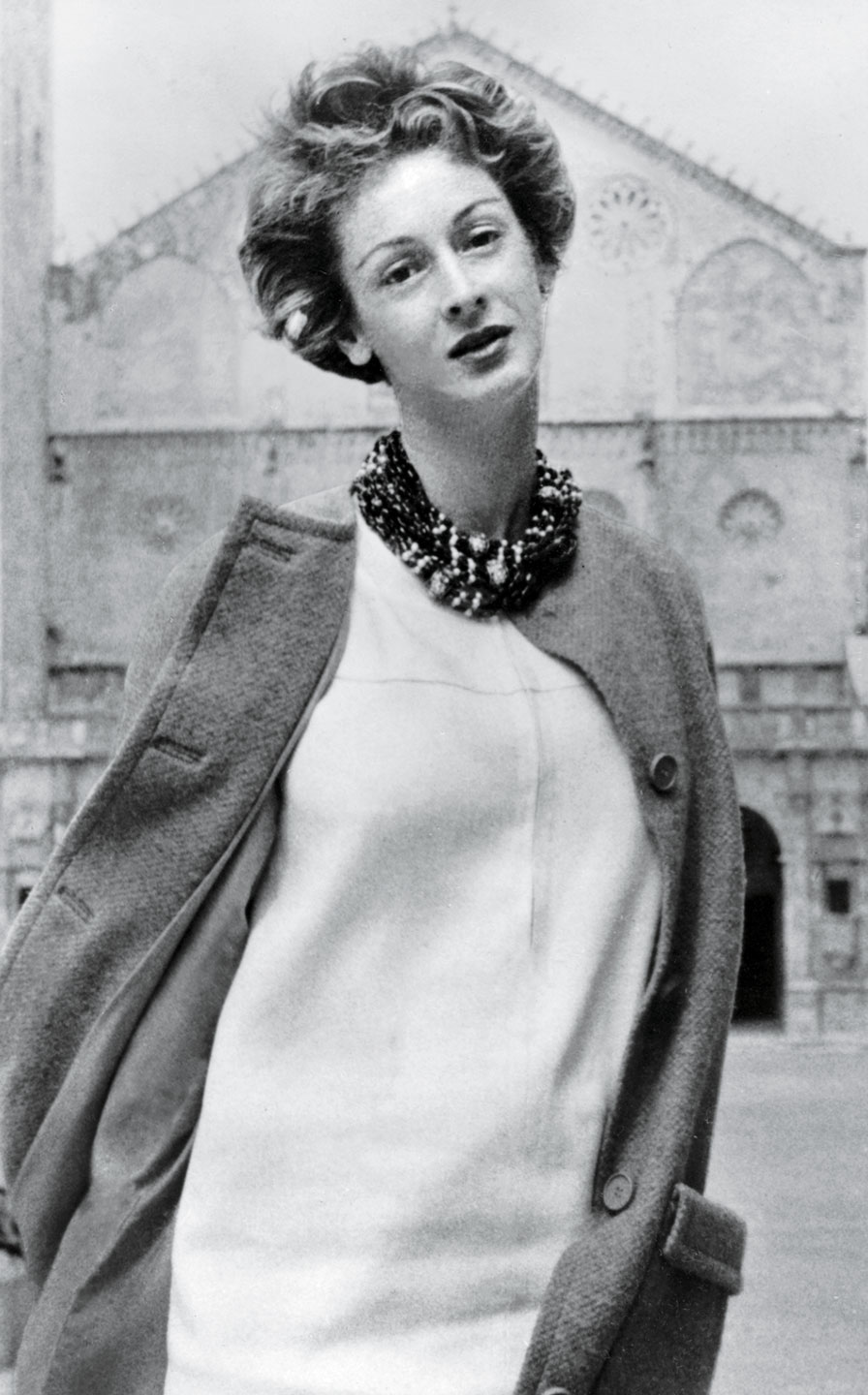
Marina Branca said: "Gianni and Marella were two absent parents. I, too, wasn’t so present. Our goal was to go out and have fun. Children stayed home with ladies and housekeepers.”
“They weren’t a normal family,” somebody else said.
De Benedetti, partner and Fiat’s chief executive on the famous one hundred days of 1976, told: “I was at the Avvocato’s house, at some point a door opens and Margherita comes in, completely shaved. Agnelli looks at her and says: 'what did you do?' And she answers: 'at least you noticed me'".
The cook Giulietto told: “the President of the Republic was meant to meet him for lunch at the Roman residence of Agnelli on via XXIV Maggio. The Avvocato calls me to talk about the menu and tells me: 'we give him bulls balls'. I say: 'excuse me Avvocato, but giving President of Republic two balls, you know, looks bad, let’s do something else'. And he said: 'dear Giulietto these people must be treated as they deserve, think how good it is “dare due coglioni a un coglione” (to give an asshole two balls)'”.
The image of the Avvocato was once again cold, distant and vaguely carefree. When he went sailing in Libya in 1976 to sell ten percent of the Fiat to Gheddafi, then he telephoned his banker friend Michel David Weill, who said: “he told me to resign because new partners wouldn’t have liked to see a Jewish last name on the board of Fiat. And then, goodbye.”

He smiled: “a man completely devoid of feelings.” Fiat has not been really his after the entry of Romiti, such was dependency on Mediobanca. After announcing that his brother Umberto would succeed him as president, he was forced by Cuccia to change his decision just in favour of Romiti. Pain and humiliation. The gardener recalled: “they returned home and Marella said: 'today we need to be close to him'”.
The Avvocato was obsessed by the dynastic succession and considered Edoardo inappropriate, useless. The journalist Jas Gawronski recalled about that: “he was a sentimental person, an intellectual, completely different from his father who didn’t appreciate him.”
Gianni appointed the son of Umberto, Giovanni Alberto nicknamed Giovannino, who seemed to be tailored to be liked by his uncle but was killed by cancer at the age of 33 in 1997. “At that point of the bloodline there was only John Elkann," De Benedetti cynically noticed.
There was in the film a prophetic interview Agnelli did in France the day after the killing of Aldo Moro, where he said: “next to Moro’s dead body there’s the one of the first Republic.” We can similarly say that, next to Edoardo’s dead body there was the one of his father. And next to the Avvocato’s dead body, that of an uncrowned king, there was the one of Fiat.
The brilliant playboy hasn’t been there to build it, hasn’t been there to rebuild it and has not been able to let it survive to himself. Apart from his style, Gianni Agnelli is remembered for his unmatched sense of humour. His statements and comments were often unexpected and to the point and they impressed his interlocutor with their irony and depth of judgment. Many of his remarks have made history. Many of his public speeches are still current today.
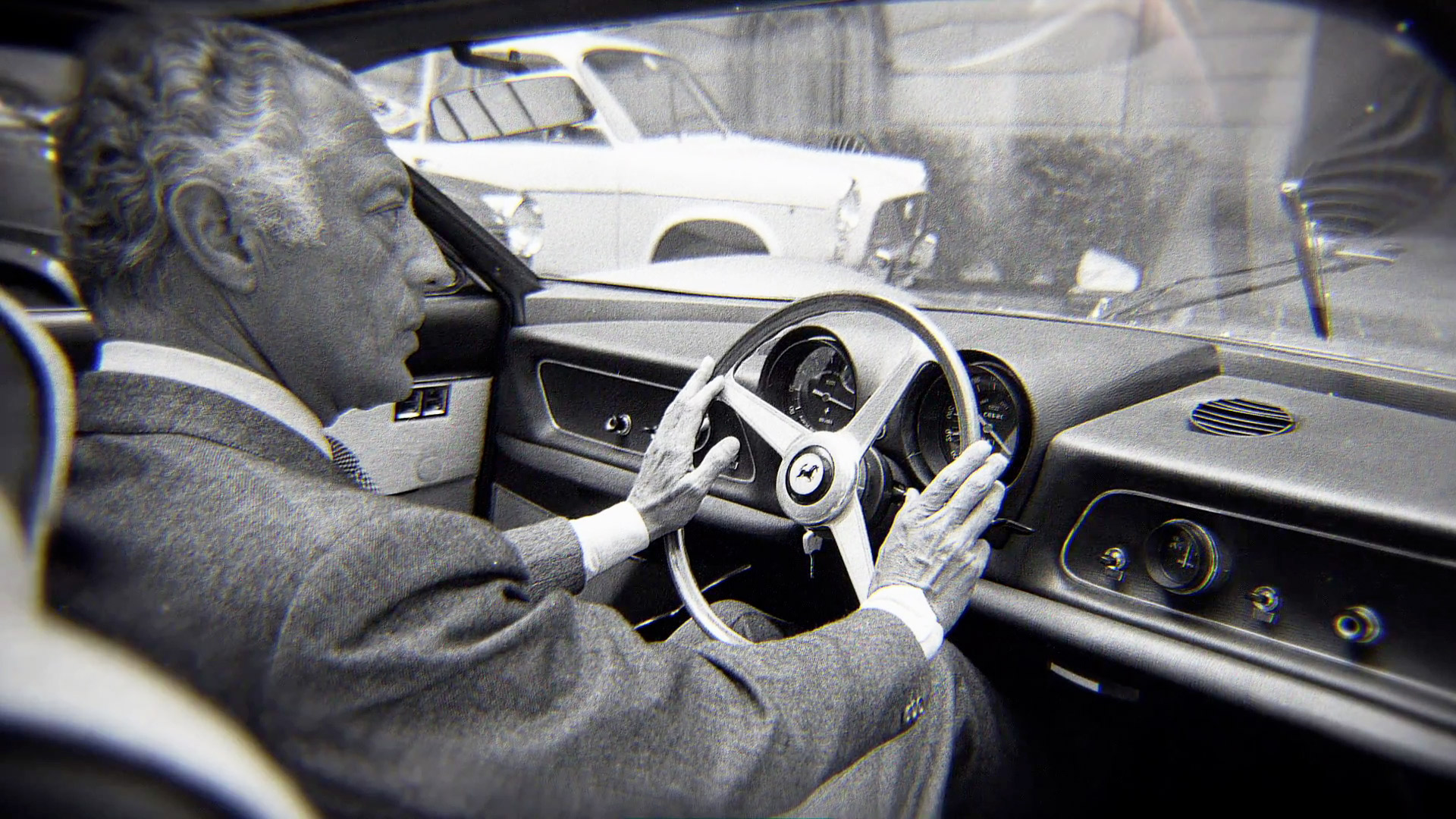
Here are some of his more famous phrases:
- Not every Italian supports the national team while all Italians and 50% of non-Italian support Ferrari.
- I was going to Capri when countesses were whores, now that whores are countesses not funny anymore.
- The classy lady is not who makes people whistle when she passes by but who suddenly makes everything quiet.
- “Avvocato, it’s Marta Marzotto,” the noblewoman told running at him. And he said: “yes, I know,” walking faster to get to the elevator.
- [about Diego Armando Maradona] “Better than any coach.”
- I love America with all my soul.
- An Agnelli must be brave even in a war.
- There’s plenty of ways to die and an accident is not the worst. There are all sorts of worse ways to die.
- Saragat said: “dear Agnelli, now that you are the chairman of Fiat you won’t be able to court girls anymore.” And Agnelli answered: “then I resign right away.”
- I like the wind because you can’t buy it.
- A thing done well can be done better.
- I’m fond of ecologists. But they have expensive plans. You can’t be greener than your own pockets.
- The chauffeur never drives. I always drive, it’s a habit of mine. Once, when people travelled by horse-drawn vehicles, they said ‘there are those who prefer to sit on the box and those who prefer to sit inside the carriage’. I prefer sitting on the box.
- I’ve always been happy to drive, and fast. There’s one particular time, between four and six o’clock in the morning, when the car headlights are still switched on, while those who’ve just woken up don’t put on their lights. Butchers, for example, in their vans going to the market. And I managed to end up driving into one of those.
- Oh, I’ve certainly never been short of pleasure. Do you know what real pleasure is? A creative act. A pleasure without creativity is dead boring.
- I don’t much like taking stock, and especially I don’t like the past except inasmuch as it fixes our identity. I love the future and I’m fond of young people. My whole life has consisted of betting on the future.
- You fall in love at the age of twenty; after that, only waitresses fall in love.
- Everybody’s a playboy. Everybody tries to be one, some manage it, others don’t.
On Fiat:
- There are three phases in building up a group like ours: the time of strength, the time of privilege and the time of vanity. In my opinion, only the first one counts. I don’t want the others to exist.
- Three-quarters of my life coincides with that of Fiat. And my relationship with Fiat is half memory and half experience.
- I act through professional experts, but they don’t take decisions without consulting me.
- A boss who doesn’t expect a company to make profits is a very bad boss.
- “What is good for Fiat, is good for Italy” (attributed to Gianni Agnelli, this was partially denied by him during an interview given to Gianni Minoli in Mixer, where he stated: “what is bad for Turin is always bad for Italy”).
- With zero profits, the crisis won’t be resolved but will get worse and may produce very bad consequences. We’ve only got two prospects: either a head-on collision to lower salaries or a set of brave initiatives to break with the past and eliminate the more intolerable phenomena of waste and inefficiency. It goes without saying we have to choose between these.
- If they’d told me when I was a boy that I’d be a shareholder of General Motors, I’d never have believed them.
- My grandfather had 70 per cent of the Fiat shares in his portfolio and managed them by giving low dividends. Also because he would have distributed them mainly to himself. He preferred to set aside to a reserve and with the reserves he built the great Mirafiori factory. But nobody knew why he didn’t talk much. He wasn’t like me, in fact, who talk about everything at the general meeting.
- When Vittorio Valletta passed on what he called the highest responsibility to me in 1966, I remember he told me very sincerely: ‘today Fiat is strong, it’s financially viable, we cover over two-thirds of the Italian market, there’s serenity and social contentment. I’m really happy to give this Fiat over to you, in these conditions, after working closely for so long with your grandfather.
- My private life doesn’t count at all. What counts is being of service to Fiat at the right time, like now.
On art:
- A passion for art grows with maturity. When I was a child, my father took me to visit museum because he felt that beautiful things could educate, and that taste became refined from childhood onwards, and he was right.
- There is an aesthetic taste. The mere pleasure of seeing a work of art. It’s not seeking to possess it, but the desire to admire a work of creation. In my life I’ve had a lot of joy from observing and studying these works. I now hope that many other people will want to share with me this feeling and this desire. Aside from the words of critics and scholars, I would like those who see the works I have donated to the new gallery in the Lingotto in my city, Turin, to remember that keyword: the joy of admiring art.
- I like beautiful things that are well made. I even believe aesthetics are equivalent to ethics. Something that is beautiful is ethical, and unethical things aren’t beautiful—from tax dodging to doing things in an underhand way.
On Italian-ness:
- Italy swallows everything, its strength lies in the spinelessness of the authorities, in the pliability of politicians, in the capacity of the Italians to adapt. It’s a mattress, the Italian system. Pasolini would have said it’s a “ricotta”. Or, if you prefer, flectar non frangar. And we, natives of Turin, have always felt rather like foreigners in our homeland, for the very reason that we are a mountain people. Turin reminds one of the old garrison towns – duties before rights, Catholicism still has Jansenist undertones, the air is cold and the people get up early and go to bed early, Antifascism is a serious matter, and so is work, and profits, too.
- To be Italians in the world we have to be Europeans in Italy.
- There’s a contribution I make indirectly and for which I cannot take any credit: when people – foreigners – see Italy, they see that I’m here on the Italian scene, that I live here and that I believe in it; this fact is interpreted as a sign that you can have confidence in this country, that Italian society is a society you can give credit to, if Agnelli and Fiat and what they represent have a secure position here.
On Juventus:
- To me, Juventus means a lot sentimentally. In the 1950s and ‘60s when there were substantial flows of migrants to Northern Italy, a lot of southerners chose Turin precisely in order to see the Juventus team in action. For many people, seeing them play live has always been a dream.
- [On Michel Platini] “We bought him for a piece of bread and he’s put foie gras on top of it.”
- Juventus has a habit of saying and believing that when things are going well, it’s due to the players, but when they aren’t going so well, it’s the company’s fault.
- [On Marcello Lippi] “The best product of Viareggio, after Stefania Sandrelli.”
- […] Because Juventus, after a century of history already, has become a legend. A legend that started off in a high school in Turin and finished up by gaining nine or ten million fans in Italy and, of course, the same number abroad with a jersey and colours that are known throughout the world.
- If Baggio is Raphael, Del Piero is Pinturicchio.
- [Responding to somebody who asked him: “May Juve win or may the best team win?”] “I’m lucky, the two things often coincide.”
- Buscetta said he was an obsessive Juventus fan? If you meet him, tell him that’s the only thing he won’t be sorry for.
- We’ve always had Juventus. This isn’t a business; it’s a passion, a subjective passion but one that’s shared by a lot of people.
- Other people talk about Juventus-style; we don’t.
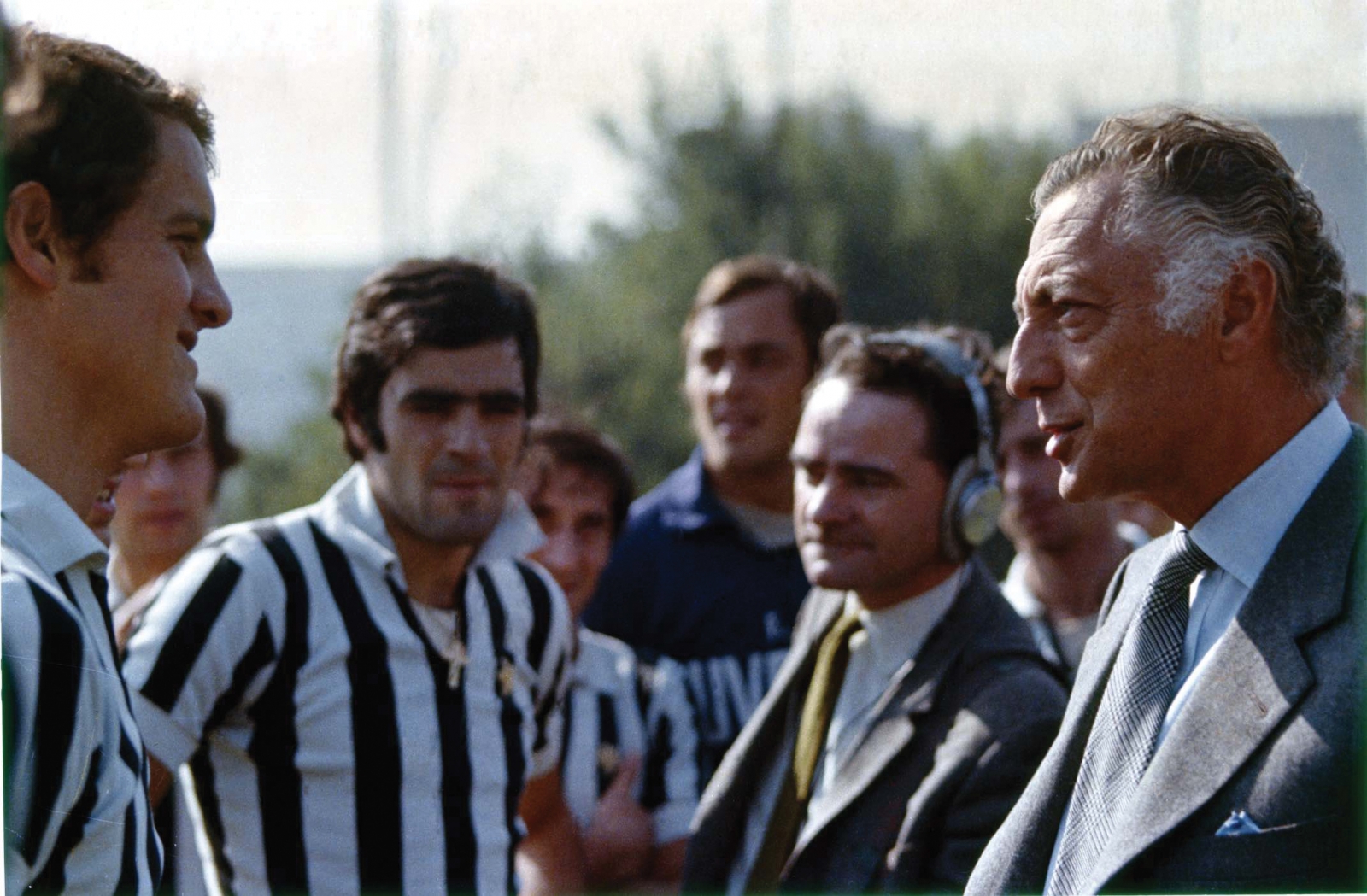
On family:
- You can do anything, but you can’t leave the family.
- Everything I’ve got, I’ve inherited. My grandfather did it all. I owe everything to the right of ownership and the right of inheritance; I’ve added the duty of responsibility to that. If I hadn’t been born that rich I would have never become.
- My grandfather certainly said that you have to get everything out of your head before starting work seriously. He called me back to Fiat to be beside him as vice-chairman. I was 23-and-a-half years old. Then I went away again, to be a soldier again for a certain time, then I came back.
- My grandfather, the senator, had given me the go-ahead, telling me that I could enjoy myself for a few years – drop out – before becoming a serious person. So I rejoined my friends on the international scene, in Saint Moritz, New York, Paris and on the Côte d’Azur. We used to have great times at all-night parties, on my yacht and in our villa at Beaulieu. Of course, there were beautiful girls there. But at that time there were two categories of men around: those who talked about women and those who women talked to, very intimately. There were actresses, real ladies and others who were only half-way ladies.
- Don’t call me senator. Each time I hear that word I think of my grandfather, who is everything to me and my family. He’s the senator. I’m known as Avvocato Agnelli, and that’s how it should be.
- My father had some great qualities, he was quite a gentle person. But I consider myself as my grandfather’s grandson; I was at his side from the age of fourteen to twenty, during my formative years. The responsibilities passed directly from him to me…
- My sister Suni was my real friend, perhaps because she’s the closest to me in age. And my sister Clara, too. The others were younger, but then I became great friends with Umberto as well. We understand each other immediately, even before we speak. That’s rare, you know, between brothers.
- I’ve always been a devoted husband, but if I were to claim that I’ve always been a faithful husband, I would be telling a lie.
- Marella? We’ve been together for a lifetime. At that point, the other person becomes a part of you; how can you say you’re friends? It’s more, much more, it’s a piece of yourself.
- I’m not a great teacher. I’m more inclined to let people do what they want. I take my grandchildren, I talk to them, I laugh with them and we go to museums and to the cinema together. I know how to do it. But I’m not a good teacher.
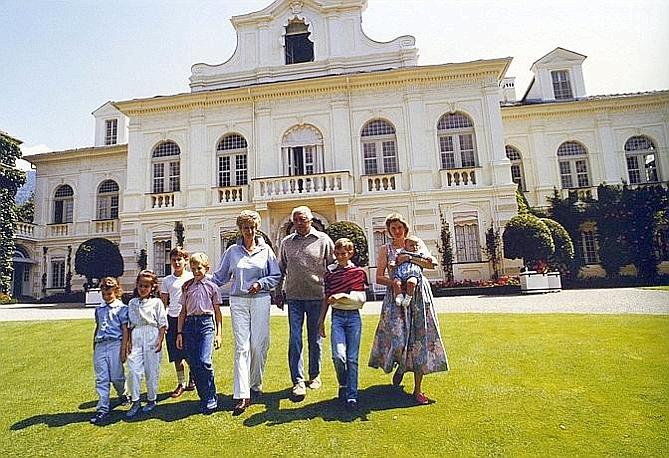
On politics:
- I have no enthusiasm for politics and politicians. I recognize that it’s a necessary activity and that, at least in theory, it’s the most noble of all, to manage the interests of the population, of the community. But I don’t like the inevitable partiality of political parties and the equally inevitable egoism of those who lead them. Finally: Fiat has a certain importance to the economy and to Italian society that cannot be combined with a political affiliation.
- Politics doesn’t tempt me, it’s too late, but I’ve taken part in all the elections for President because it’s important to take Parliament seriously.
- “Up to now the Communist Party has been viewed from two perspectives: that of hope and that of fear. After today’s episode I think the hope perspective has been wiped out.”. [after the picketing of Mirafiori: dig at Enrico Berlinguer]
- Like all politicians, Montezemolo, too, is very sensitive to what the newspapers write. Or rather, he’s more sensitive to the newspapers than to the facts. He’s wrong.
- In my life I’ve had two public elective offices, that of Chairman of Confindustria in an emergency situation and that of mayor of Villar Perosa, for 35 years: it’s a very useful experience for understanding people’s problems – the cost of lighting in the town, village life, the priest’s weight, the work of the schoolmistress.
- [On fascism] “A natural thing, as it was for all those of my generation. I didn’t like the leaders because they represented the power, and because of the stupidity of their proclamations and the madness of a foreign policy conducted with arrogance that was not backed up by force.”
- After the war in Japan General MacArthur destroyed the Japanese public industry. In Italy, unfortunately, this did not happen. Maybe because for us the war finished with a semi-defeat. Italy is the country where public backing counts most, where political patronage has more weight than the government. As long as the political power continues to appoint managers we cannot talk about privatizations.
- I’ve known De Mita for longer than Craxi. He’s a typical southern intellectual, one of those who seem to have been trained in Magna Graecia.
- For the Monarchy. I was a soldier who had sworn loyalty. […] In my view the history of the Savoy dynasty is a story that finished with the referendum. But I also know that from a national point of view it had a great value, for Piedmont and for Italy.
- I didn’t know Roosevelt. I knew his widow, a strong woman, and his son, who represented Fiat in America. I’ve known all the other presidents, in particular Kennedy… a time of great hopes first of all, and deep regret later… Reagan was a great president, but more a leader than a statesman. He was a really nice man, he told funny jokes.
Giovanni "Gianni" Agnelli was an influential Italian industrialist and principal shareholder of Fiat. As the head of Fiat, he controlled 4.4% of Italy's GDP, 3.1% of its industrial workforce and 16.5% of its industrial investment in research. He was the richest man in modern Italian history.
As a public figure, Agnelli was also known worldwide for his impeccable, slightly eccentric fashion sense, which has influenced both Italian and international men's fashion. Following his death, control of the firm was gradually passed to his grandson and chosen heir, John Elkann.
Agnelli was born in Turin, but maintained strong ties with the village of Villar Perosa, near Turin in the Piedmont region. His father was the prominent Italian industrialist Edoardo Agnelli and his mother was Princess Virginia Bourbon del Monte, daughter of Carlo, 4th Prince of San Faustino, head of a noble family established in Perugia.
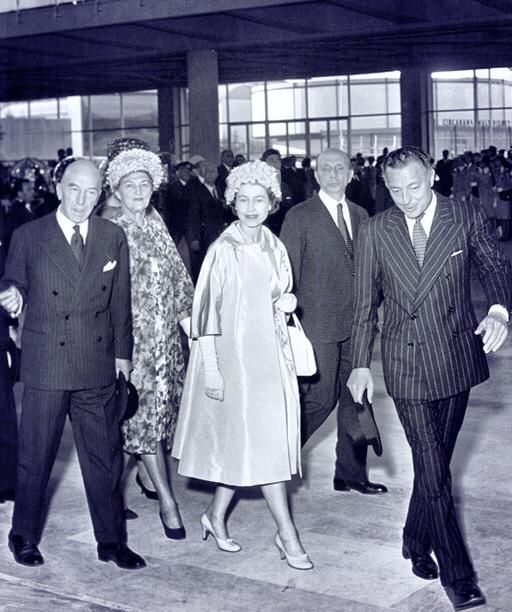
Agnelli was named after his grandfather Giovanni Agnelli, the founder of the Italian car manufacturer Fiat. His maternal grandmother was American. Gianni – as he was known to differentiate from his grandfather, with whom he shared his first name – inherited the command of Fiat and the Agnelli family assets in general in 1966, following a period in which Fiat was temporarily "ruled" by Vittorio Valletta while Gianni was learning how his family's company worked.
He was universally considered to be a man of exquisite taste. He left his extraordinary paintings to the city of Turin in 2002.
His only son, Edoardo Agnelli, was born seven months after the couple's wedding, in New York on 9 June 1954. Gianni gave up trying to groom him to take over Fiat, seeing how the boy was more interested in mysticism than making cars (he studied religion at Princeton University and took part in a world day of prayer in Assisi). Edoardo, who seemed burdened by the mantle of his surname, committed suicide on 15 November 2000 by jumping off a bridge near Turin; Gianni himself joined police at the scene. Edoardo never married, but he had one son (born out of wedlock in 1973) who was not recognized by Gianni Agnelli.
The Agnellis had only one daughter, Countess Margherita Agnelli de Pahlen. She is the mother of John Elkann, Lapo Elkann and Ginevra Elkann. She has five other childrens from her second marriage to Count Serge de Pahlen.
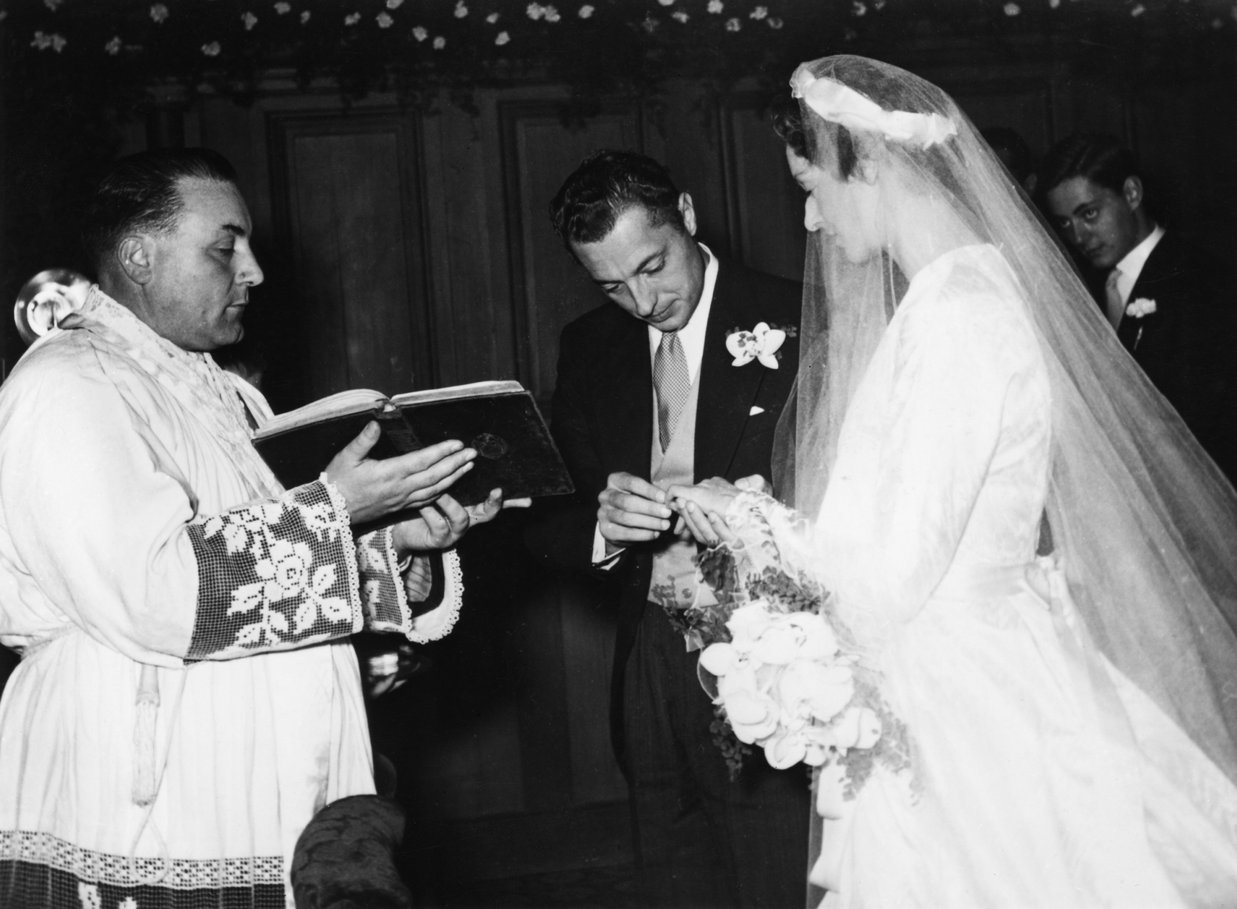
Agnelli was also closely connected with Juventus, the most renowned Italian football club, of which he was a fan and the direct owner. His phone calls, every morning at 6 am, from wherever he was, whatever was he doing, to the club's president Giampiero Boniperti, were legendary.
Nicknamed L'Avvocato ("The Lawyer") because he had a degree in law (though he was never admitted to the Order of Lawyers), Agnelli was the most important figure in Italian economy, the symbol of capitalism throughout the second half of 20th century. A cultivated man of keen intelligence and a peculiar sense of humour, he was perhaps the most famous Italian abroad. He died in 2003.
Gianni Agnelli's fashion sense stood out. His style has inspired and influenced menswear throughout the years in Italy and around the world. In his retirement speech, Milanese fashion designer Nino Cerruti named Agnelli as one of his biggest inspirations along with James Bond and John F. Kennedy. Esquire magazine named Agnelli as one of five best dressed men in the history of the World. Agnelli's dress style featured a foundation of classic suits. He had a large number of bespoke Caraceni suits, which were of very high quality and classic design. It was the accessories and the way they were worn that made Agnelli stand out as a "fashionista". He is known for wearing his wristwatch over his cuff and conveyed sprezzatura, the Italian art of making the difficult look easy.
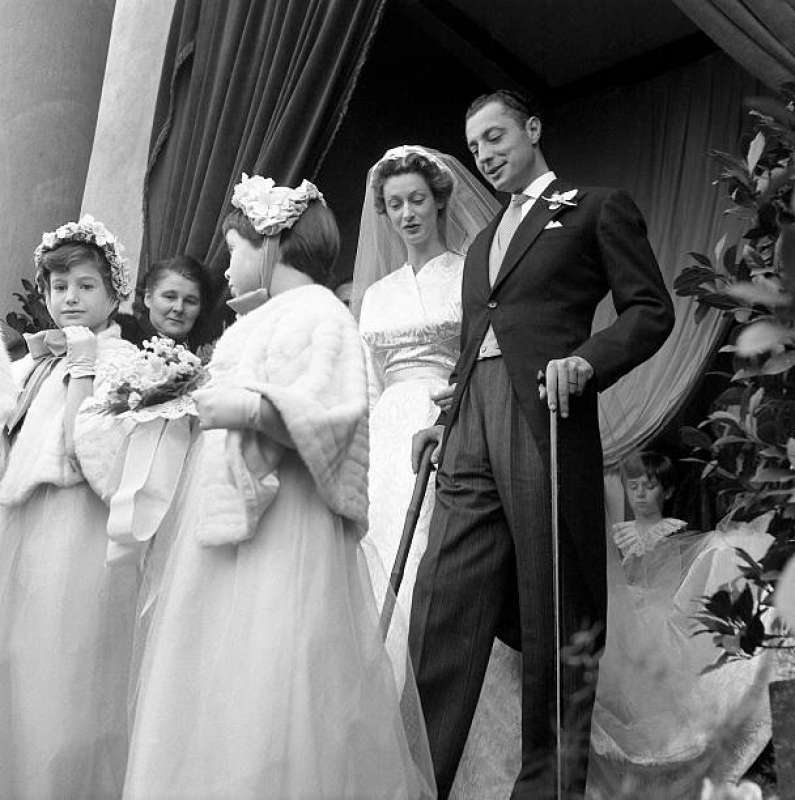
Apart from his dress sense, Agnelli's homes were work of designers and looked like studies in elegant living. Additionally, he was interested in football, sailing, fast cars, Cresta tobogganing, skiing and horses. Agnelli's nickname "The Rake of the Riviera" inspired the classical menswear magazine The Rake.
Villar Perosa, 125 hectares, the last Italian mansion. The place that most represents the Italian dynasty of automotive industry. An 18th-century luxurious villa called “il Castello" (the Castle), bought from the Counts of Perosa in the 1800s. Not just a summer house or even the place where they “vestivano alla marinara” (wore a sailor suit) (it was the building in Corso Matteotti in Turin), it’s the place of silence and of the familial reunion of Agnellis.

Villar Perosa is between Turin and “il Sestriere”, other mandatory stations of this family, the garden is a park in front of the Alps. Since 1811, the date of purchase of the house by Giuseppe Agnelli who reared silk worms, in this villa performed children, grandchildren, aunts and grandparents and friends and lovers, playing and living. That man who lived the world, traveling and living in a thousand cities, kept hung on the wall, behind the desk in his office at Lingotto, not Andy Warhol or Picasso, Matisse or Tintoretto but a painting by Giacomo Grosso, a Piedmontese painter and senator; this painting’s about the house of Villar Perosa, where, Gianni Agnelli wrote, “my grandfather was born in 1886, here my whole family is buried, here my sisters got married, here my daughter got married.”
In the park, under the snow, beech trees, forests, lakes, seem unreal. How the life of landlords maybe was. In the collection of cars that belonged to Gianni Agnelli there was a Ferrari Testarossa spider, a single unit specially produced by Prancing Horse factory for the Avvocato in 1986. This artwork on wheels flaunts a silver metal livery and the top, also silver, is made of cloth; in the lower part of the body of the car an exclusive blue profile stands out. Mechanics is the same as the standard version: the well-known 5.0 litre V12, 390 horsepower engine, however, ensures a lower speed due to weight gain determined by structural modifications.
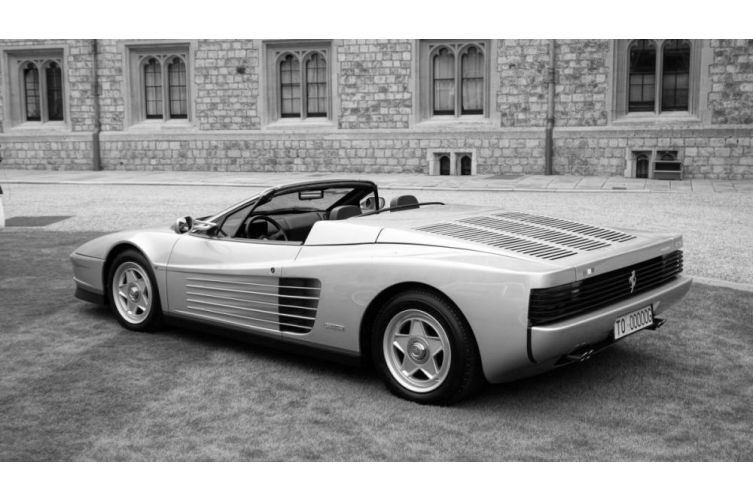
The car was built in four months, when Gianni Agnelli celebrated his first twenty years leading the Fiat group. The back engine cover has a unique design. Unlike the original model there is a special five-speed manual gearbox, that works like a standard manual gearbox but with the possibility of “hiding” the clutch to start working automatically by pressing a button. This change was made because of the incident occurred to Agnelli’s left leg and has allowed him to drive the car without straining his limb. This model of Ferrari Testarossa Spider was sold at auction for 1,21 million euro.
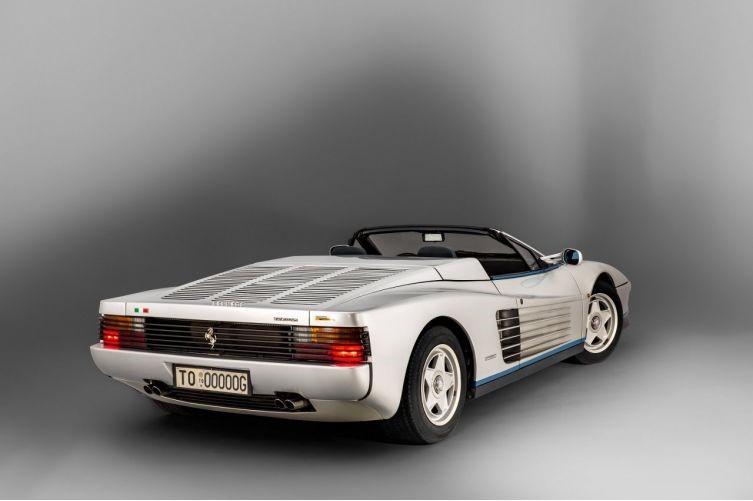
A different car that belonged to Gianni Agnelli and winner of the last Villa d’Este elegance contest, the Ferrari 166 Mille Miglia, participated in a photo shoot in Milan. The 166 MM was introduced to Turin auto show in 1948 and was the direct development of the 166 S. It was purchased in 1950 by Gianni Agnelli, who chose a bicolor combination with blue and green tones: the car was also driven by Evita Peron and Froilan Gonzales, who was the first to win in Formula 1 in a Ferrari single seater.
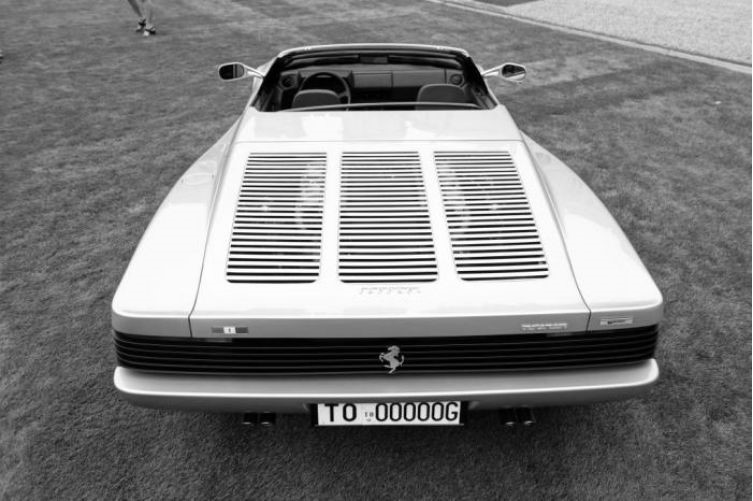
In 1952 the Avvocato sold the car, which was restored in 1966 and then exhibited in different museums (including the New York Museum of Modern Art). The 47 units were using a 2.0 litre V12, 140 horsepower engine, capable of guaranteeing a maximum speed exceeding 220 kilometres per hour.
Gianni Agnelli was considered the king of style. Whether he was wearing his watch outside his shirt cuff, driving his Riva boat or socializing in a black tie or white dinner jacket – he was always impeccably dressed. His sophistication extended to almost everything he owned, whether it was his wardrobe, boats, or also cars.
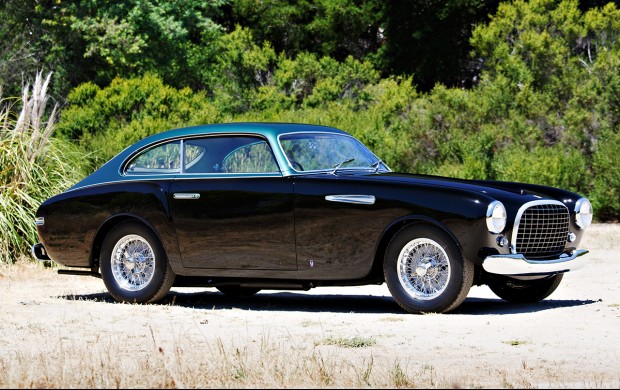
In 1955 he bought a very rare Ferrari 375 America Pininfarina chassis 0355 GT – custom made especially for him. In the 1950s Giovanni would have no links to Ferrari, other than to be a good client of Cavallino road cars. He already owned a 166MM and a Ferrari 212 Inter coupe.
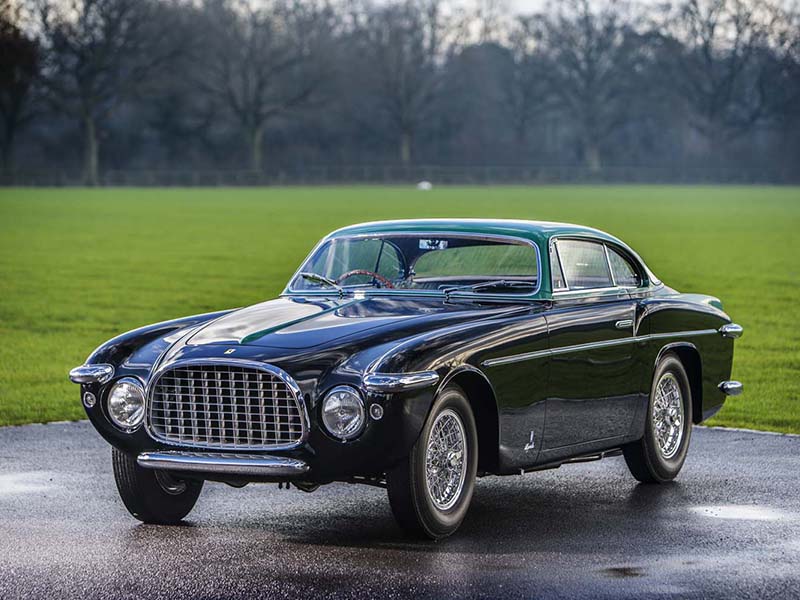
For his third Ferrari, Agnelli chose something very special. The 375 Ferrari came after the 342 America and was a top of the line reserved for the best clients of the factory. Roberto Rossellini ordered one for his wife, Ingrid Bergman, and this 375 Ferrari (which was a MM or racing version – MM stood for Mille Miglia) might be the most famous 375 of them all – it also won Pebble Beach in 2014, the first time a post war car and Ferrari would win at Pebble Beach.
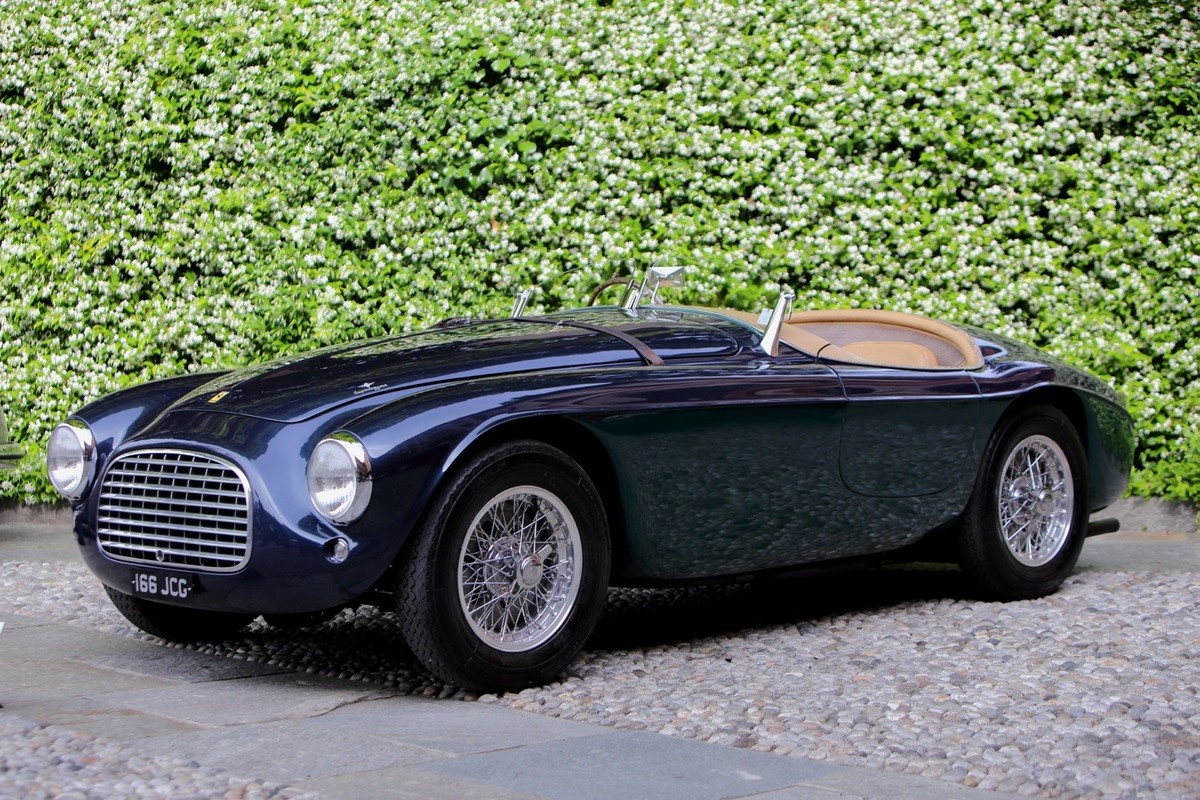
In the 1950s, which was considered the early period for Ferrari in terms of history (Ferrari road cars were only founded in the late 1940s), elite customers like kings, head of state, and business royalty could order their Ferrari to exact specifications (for example King Leopold of Belgium had an altimeter installed in his 342 America Ferrari to better tune his carburettors).
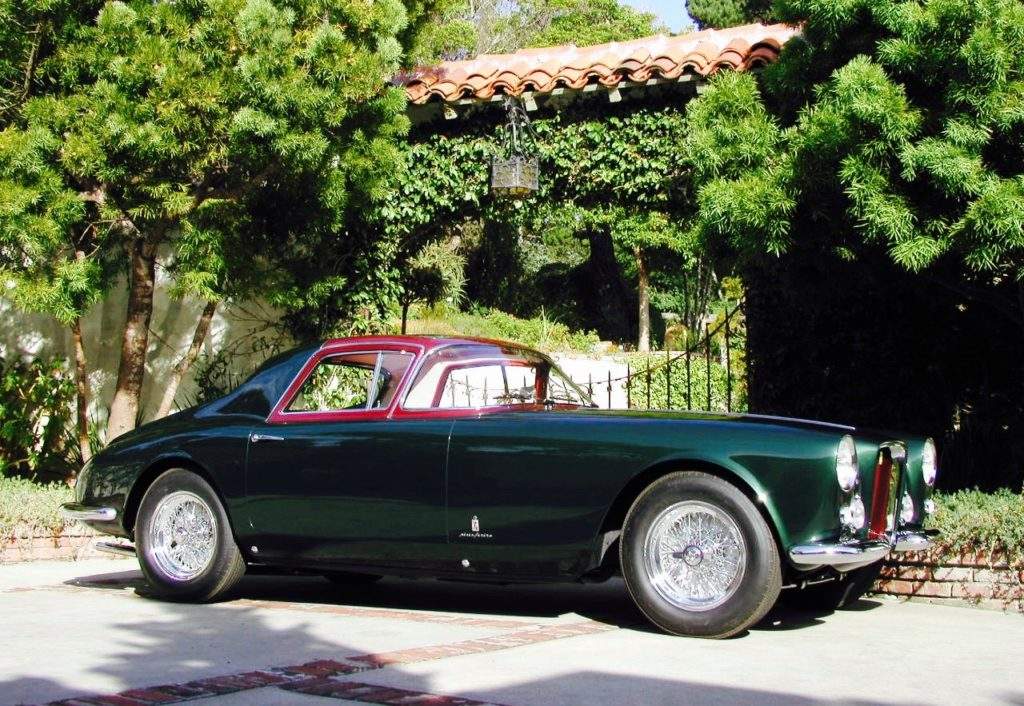
The special items that Agnelli requested for his Ferrari 375 America included: 1) a special 8 day- stop watch by Jaeger 2) a transparent rooftop 3) custom made sliding rear window 4) special wood gear shift 5) special color of verde scuro (dark green) 6) two – tone roof. The car was the 12th and last of the 375 America built, and had a 4.9L Lampredi V12 engine and 3 weber carbs. Sadly Agnelli would only keep it for four years, before selling it in 1959.
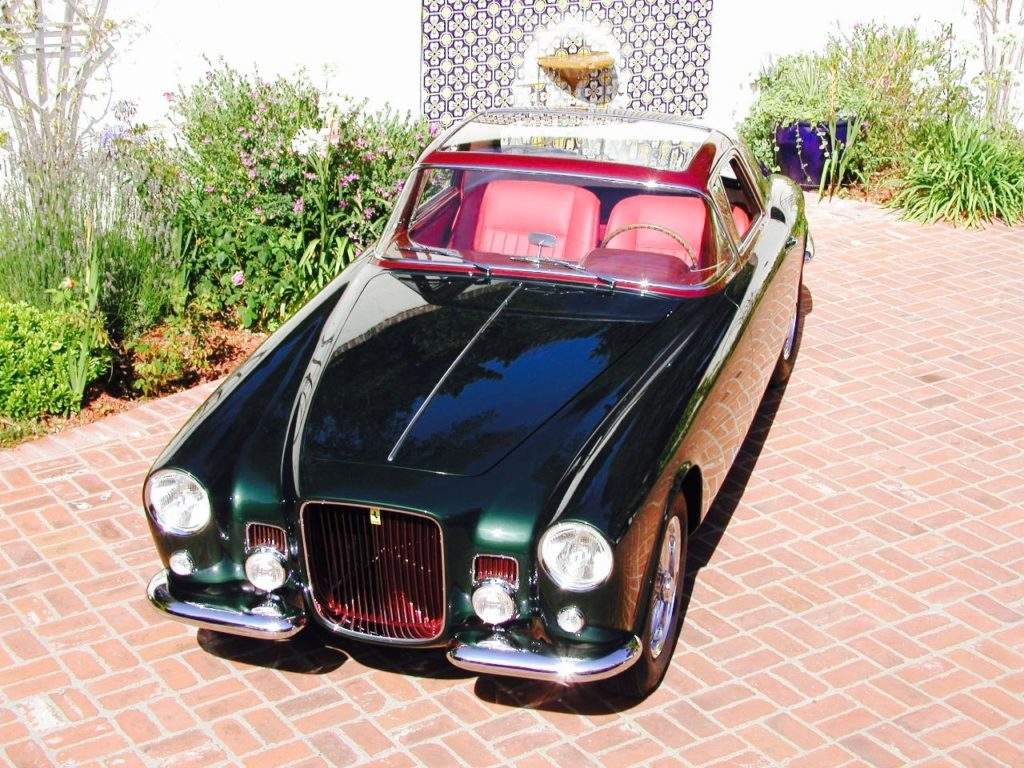
Who would have guessed that only 14 years after he ordered this Ferrari – Giovanni Agnelli would take control of Ferrari through FIAT which his family already controlled! The Avvocato had a great passion for the sea, after Juventus and Ferrari. He was calling from Turin to get the boat ready reaching it already in the open sea with the helicopter. Even though the sea wasn’t calm, even in the winter. Agnelli has owned some of the most beautiful boats of the world.
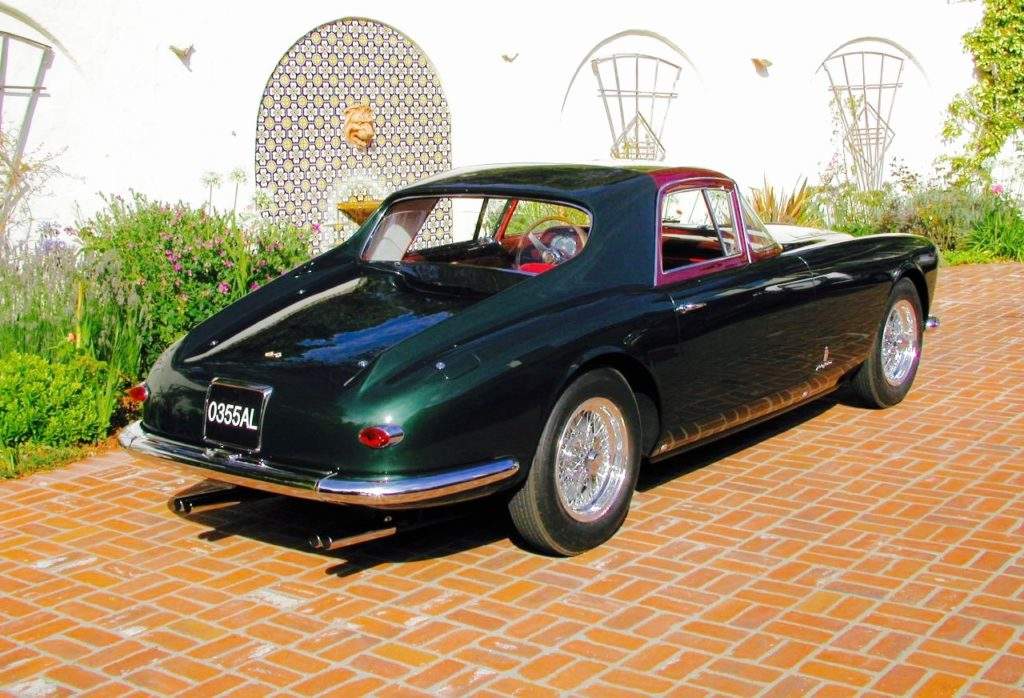
Piero Ottone, a journalist working for “La Repubblica”, wrote: “on Easter 1992, in Genoa. Clipper ships arrived from five continents started the Columbus regatta, on the 500th anniversary of the discovery of America. One fine spring day, thousands of boats of all kinds celebrating around clipper ships. Gianni Agnelli, for the occasion the king of the sea, could not miss it. His full fleet, the F100, a big motor yacht, the Extra Beat, a big racing sailing ship, and various motorboats, was deployed in front of Portofino. Early in the morning the helicopter appeared over the mountain to land on F100’s deck. He got out with Marella and the faithful Brunetto.
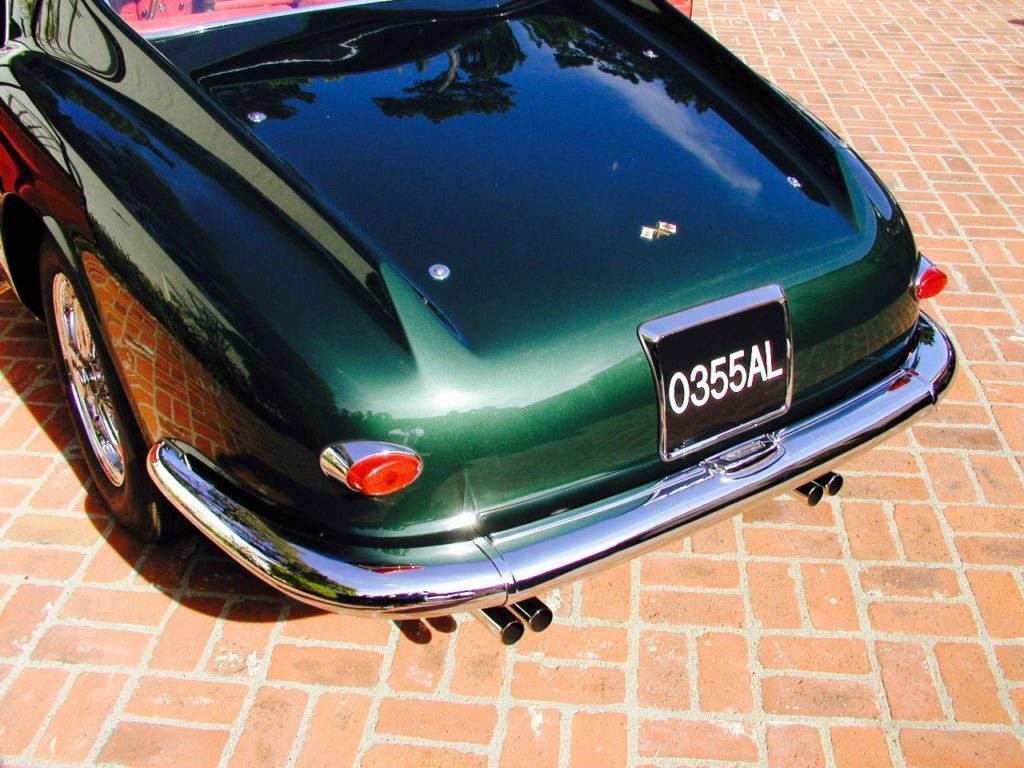
That was a day to remember: movements between a boat and the other, to see everything there was to see, in the crowd; breakfast at noon, while the headland walked down in front of the portholes; a lot of sailing, back and forth. Then, at sunset, instructions. His fleet will go to Calvi, in Corsica: a hundred miles, it will dock tomorrow morning. Meanwhile the helicopter miraculously appeared on the mountain. It will take Gianni, Marella and Brunetto home to sleep. Tomorrow morning they will be back to Turin airport, this time they will take a plane, they will go to Calvi as well. They will be back on those same boats. Couldn’t they be on board and go there by sea? They could: but it would have been too easy.
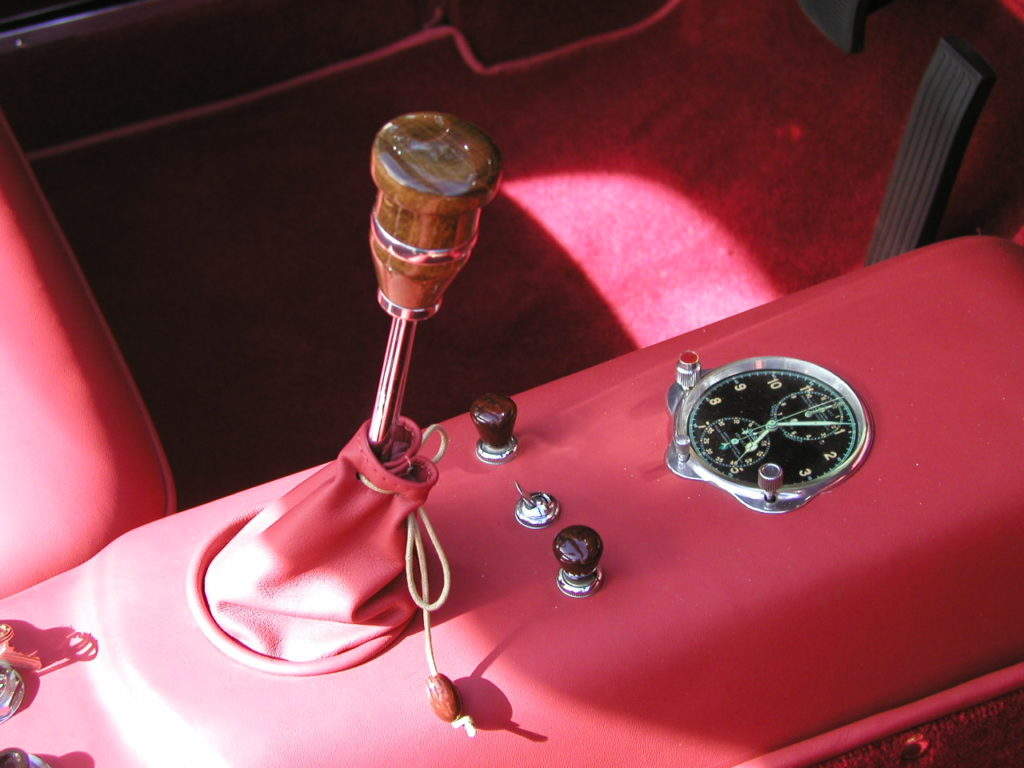
There were, that momentous day, all the ingredients of the character: the love for the sea, the desire to see always everything, the joy of living, the restlessness; and lastly the extravagance, like the Sun King. How was then Gianni Agnelli, when he was at sea? Surely he loved boats, and he has always sailed a lot, day or night. When, returned from a trip, I was telling him about my stops, he knew all of them: “I know them,” he was saying, “yard by yard.”
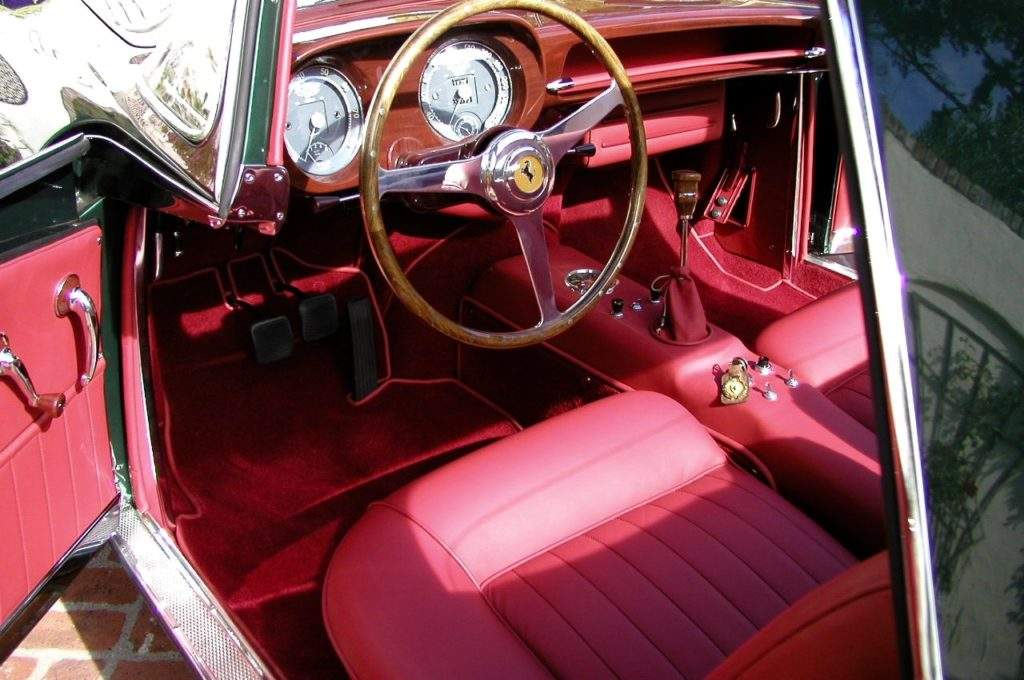
Starting with French Riviera, of course: and then Greece, Turkey, Africa, the Caribbean; the ocean, till the Baltic Sea; and, especially lately, Sardinia and Corsica, with all the bays and the little rocks around Calvi, where he had a wonderful house, made, if I’m not mistaken, from an old convent. He also had great inspiration when choosing boats, from that elegant Tomahawk with which he left long time ago from French Riviera to take to Capri the famous Pamela Churchill, young love – the trip was interrupted, Pamela’s face was injured – to Capricia and Agneta, sumptuous, and to the last one, Stealth, which his nephews, John e Lapo, keep in Genoa.
He liked to be at the helm, naturally: with some lack of interest in devices aboard: once, on Capricia, I asked him how the winches worked: I found out he didn’t know. He liked cool weather, the strong wind. But how he got tired soon! Restlessness didn’t abandon him even on the boat. An example: in September, there was a phone call, the Avvocato is coming tonight. He arrives, we leave. To where? He said: for Corsica. And went to sleep. Two hours later he woke up, opened the hatch, looked out, asked where he was. You could still see the coast, in aft: good, let’s head for Naples. We changed course. An hour after that, he looked on the deck again: where are we? Roughly where we were before, just a few miles ahead. A new order: let’s change direction, get back to the mainland. And so we went to Portofino. In the morning, a bath at Paraggi. But the sky is grey, it’s back to Turin.
The story reminded me of another event, that happened on a plane, not at sea: departure from Turin to Saint Moritz, but the weather was bad, we changed direction in the air and went to Nice, then the weather was bad also in Nice, we continued on to Corfu, but it was too late, we landed in Rome. Restless: and also rather spiteful, sometimes. In Barcellona he went to see the bullfighting, saying to the sailor on duty to wait in the car. After two hours he finally came back, and asked with indifference: «how’s it going?» The sailor didn’t hold back, telling him that, if he would have known to have to wait so long, he would have gone for a ride in the city. «Then I was really right», he answered. «You would have definitly gotten lost.»
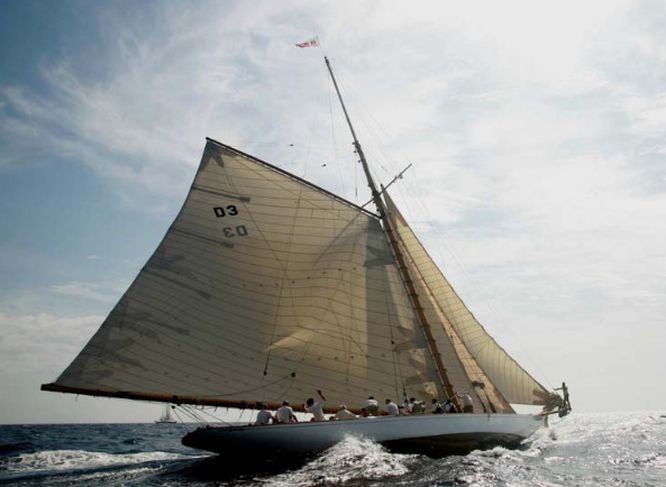
Mischievous, and not just with sailors. On stage Henry Kissinger, the only one identified with the name, among many guests that sailors have seen parading aboard. We’re in Tangeri, for the great celebrations of Michael Forbes, a jet-set star. At the time to come back on board, the catwalk was very steep due to the low tide. The former US Secretary of State didn’t dare face it, also because, he said, he had a few drinks. A little sidebar: how to get him on board? You can’t wait the high tide. At the end a sailor, former fisherman, suggested to let him sit and to slide him on board, like he was a case of fish. The Avvocato watched amused; then, when Kissinger inelegantly reached his destination, all happy to be safe and sound, he told him: «Henry, you are full of admirable qualities. But surely you don’t have a marine foot». I understand Kissinger’s good mood, despite everything: you were good on Agnelli’s boats.
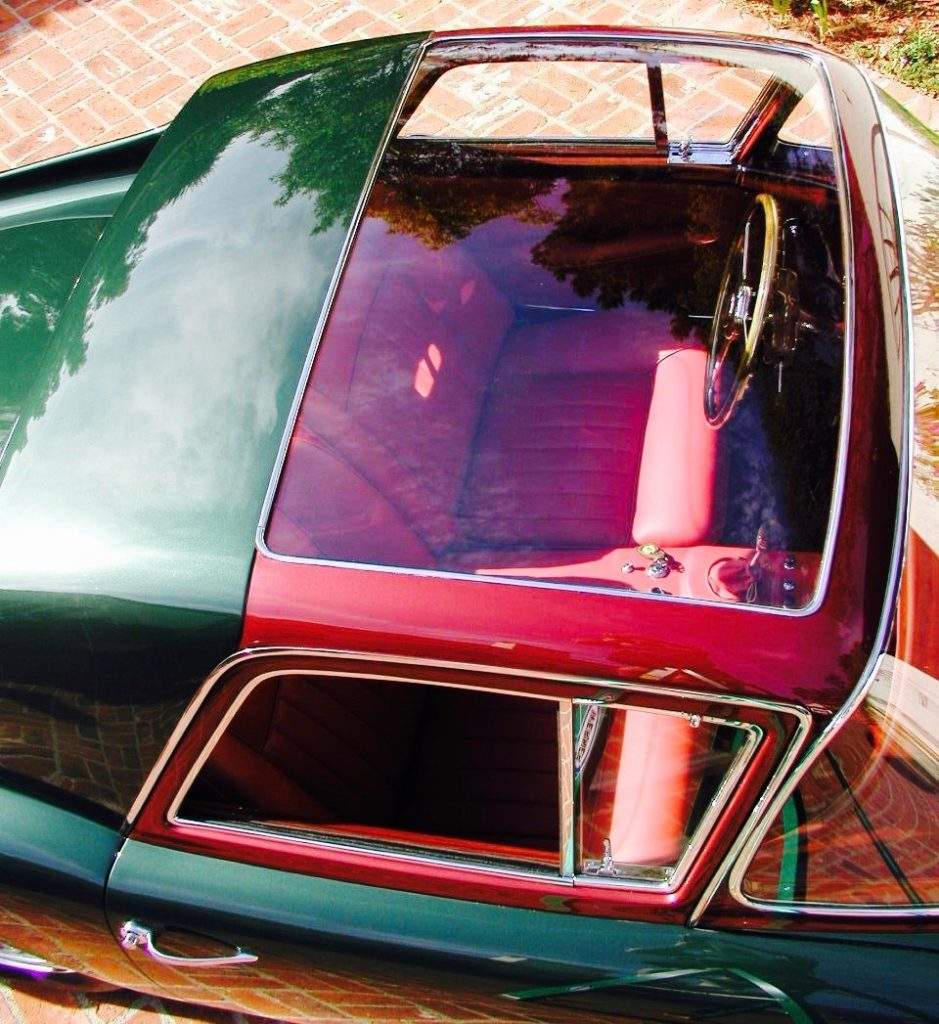
The owner, although twitchy and unpredictable, although capricious and demanding, had always the right tone, he could lead and require without ever giving orders, like a king from another time. Wasn’t that his charm? Agnelli was the world’s most popular Italian of his time, not because of what he did but for what he was, for the vitality, for the joy of life, for the elegance. And also for jokes, of who looked amused, sometimes even a bit irresponsible, at how the world works. Here we were in Montecarlo, for the Grand Prix. A voice from the audience shouted: «Avvocato, I have two thousand Fiat shares and I’m really worried». The quick answer was: «imagine me!»
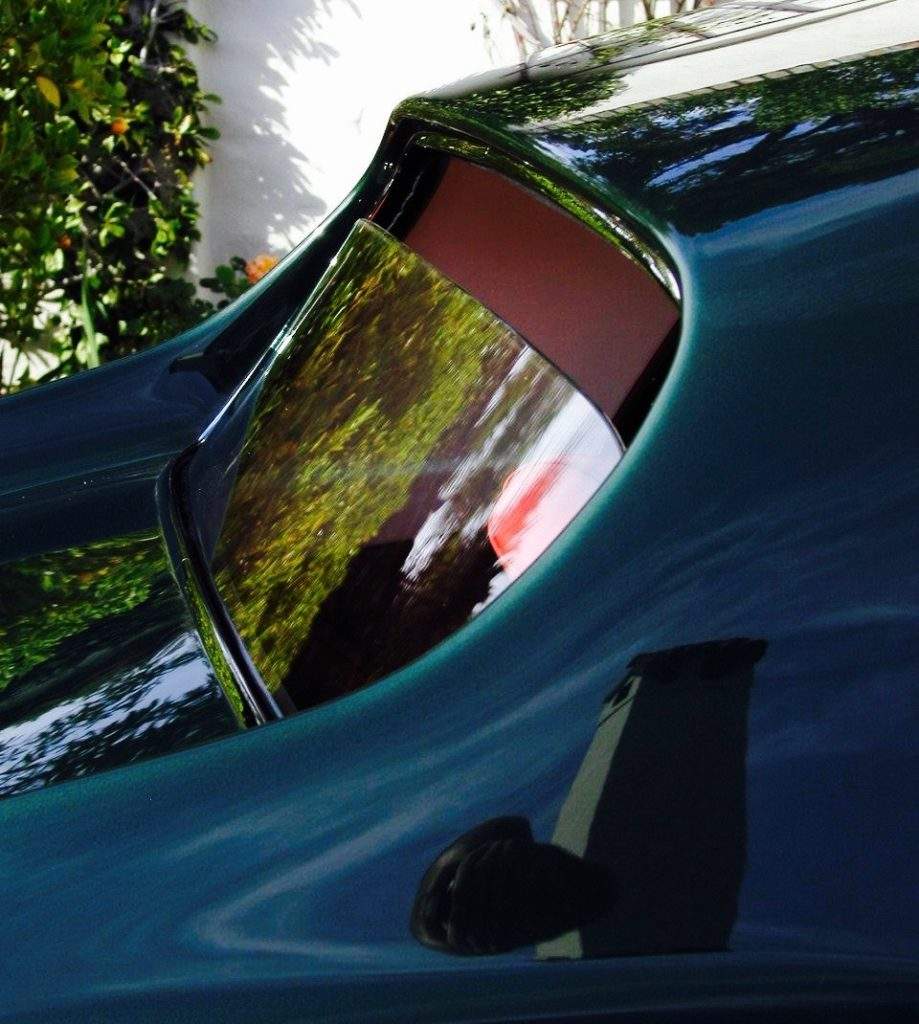
I will end on a personal note. I read in this book – he had never told me – that one day Agnelli was at the helm of Extra Beat, on the French Riviera. As often happened to him, he loved to risk, was reckless. He was sailing too close to the coastline. Captain begged him to move away from the coast, there were shoals, the draft of the boat was twenty feet. «Don’t worry», he answered. «I know these shores by heart. I spent much of my youth there». And he continued unfazed to Villefranche. Captain was on pins and needles. Finally the inevitable blow to the bulb, the boat ran ashore. Then it won’t be hard to get it under way again. But nobody talked for a while, until he broke the silence: «this is a place where I should have safely gone through, I know it better than that», he said. «I might have figured out what happened: they have restored the villa and threw building waste into the sea, including rubble».
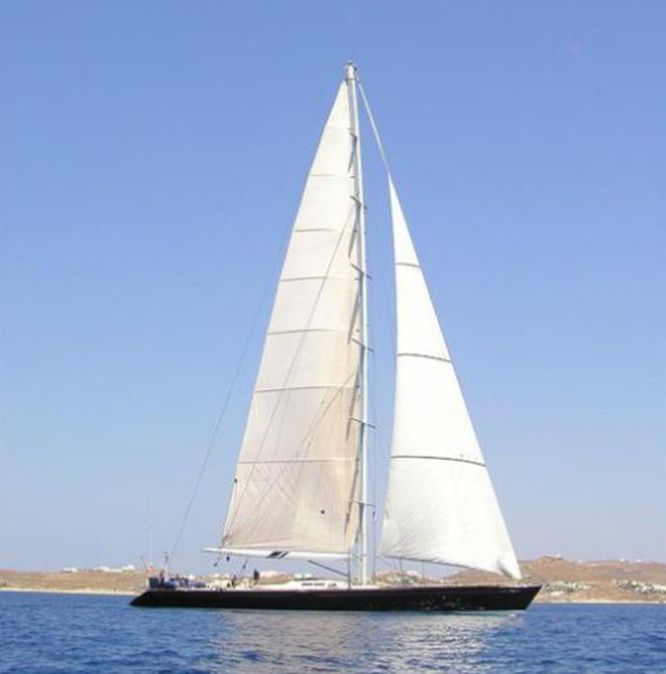
The episode interested and even amused me a bit, because of a precedent. I already told that Agnelli was always quick with a sassy comeback, he loved to make fun of people. One day he was lauding what would have been his last boat, Stealth: made, he said, with ultra light materials, therefore superfast. I asked him: «is it safe? If it is so light?» «Very safe», he answered maliciously, as if he would have expected the question. «If you don’t drive it on the rocks!» The reference was obvious: a while back, in front of Casablanca, I have driven on the rocks, precisely, my boat.»
The first Avvocato’s sailboat, in the ‘50s, was a 21,20 meters long America’s Cup yacht; built in 1938 in Great Britain by Camper & Nicholson Gosport with a hull made of steel and mahogany, it was launched in 1939.
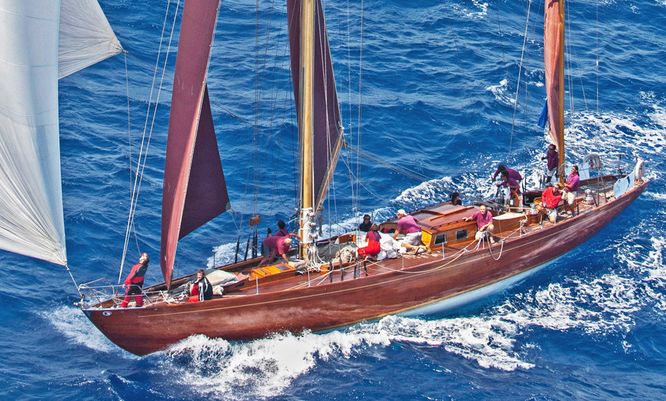
Agneta, drawn, built and launched in 1951 by Swedish Knud Reimers, was instead purchased by Agnelli in 1959 and sold to brothers Donà delle Rose after 25 years. It’s one of the most beautiful boats currently in the Mediterranean, with a mahogany hull and ochre coloured sails.
In 1971 the Avvocato purchased Capricia, a 22,00 meters long boat built in Stockolm in 1963 according to the design of the same Swedish architect Reimers. The hull was made of mahogany and teak and designed by Sparkman and Stephens. In 1993 he gave it to the Italian Navy which used it as a training vessel, removing the bathtub wanted by the Avvocato.
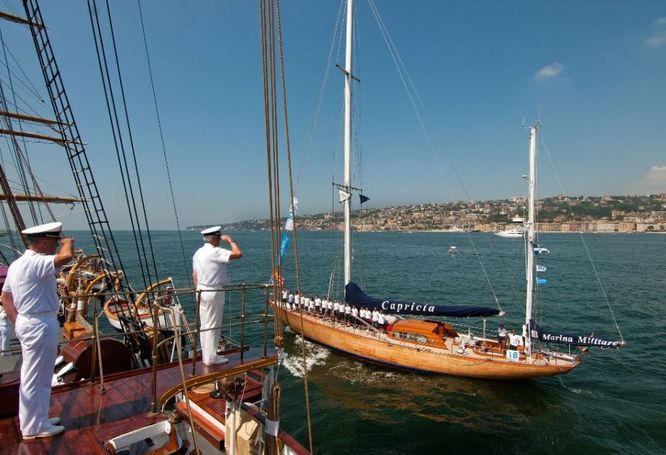
In 1988, for the first time, Agnelli got a boat built ex novo, the Extra Beat. Aluminium-built by the German boatyard Abeking & Rassmussen according to the design of Argentinean German Frers, it is 36 meters long and with a 49 meters high mast.
German Frers again for the last Avvocato’s boat in 1996, the Stealth, a composite-built “monster” with kevlar/carbon sails. For the first time Agnelli took part to a regatta (but he was not on board) and in 2001 won the mythical, 608 miles long, English Fastnet race. The boat was 28.02 meters long, 6.10 meters wide and had a 5 metres draught. Built by Green Marine (Lymington, England) in a carbon fibre and nomex sandwich, it had a 38 meters high mast, a 11,30 meters long carbon fiber boom and a deck made with teak. It got the name from US bombers, invisible to radar and painted black. The sea Stealth had a total black look as well, including hull and sails. This boat still remains one of the most beautiful and innovative on earth, to the point that many designers have drawn inspiration from it to develop their drawings.
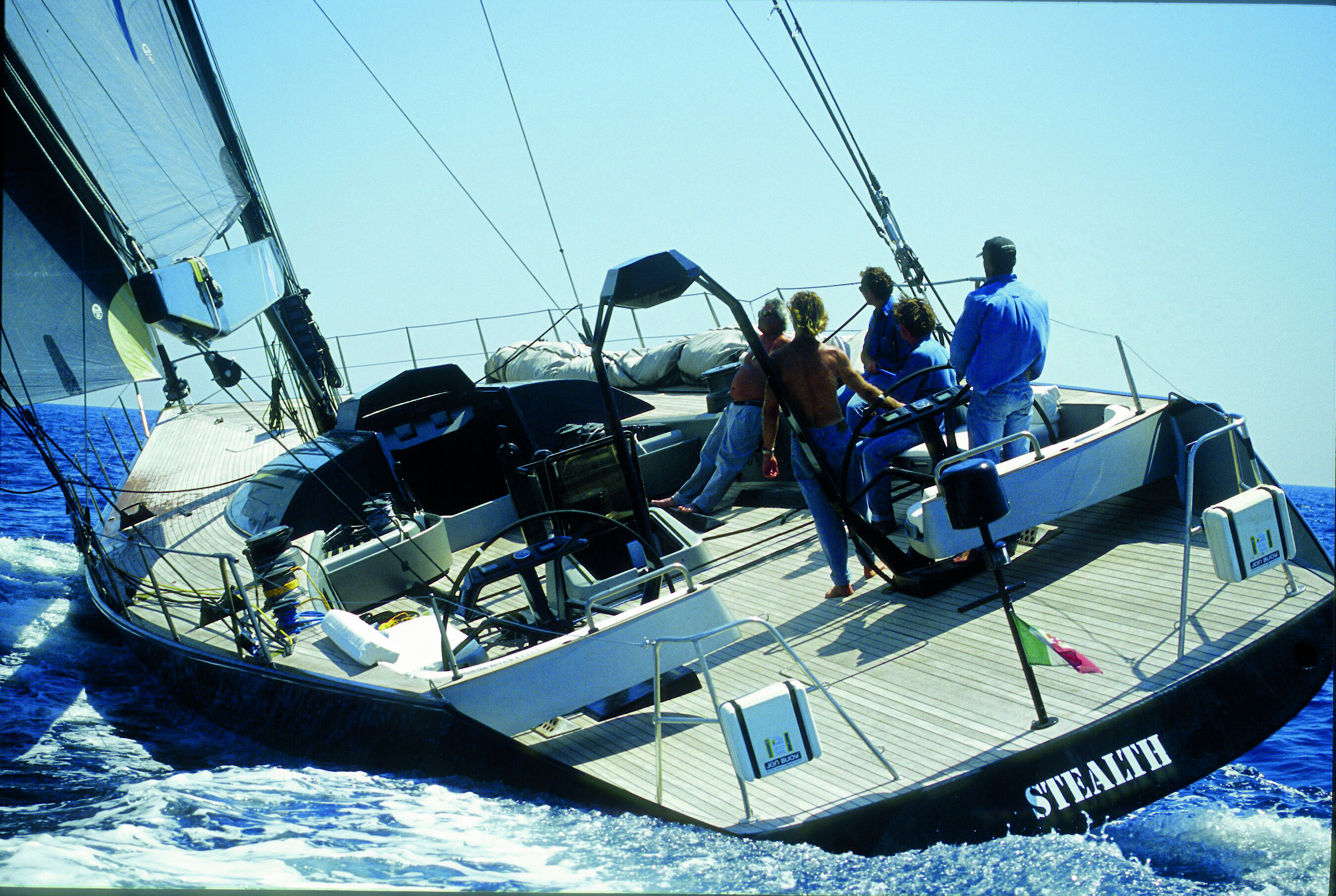
In addition to sailing boats, Giovanni Agnelli has also owned motor boats. The Kum, a speedboat built in America in 1950, has been his first one. Then G.A. Trenta, built by the boatyard Baglietto in Varazze in 1963.
“At Corfu, in the bay of Palio Castrizza, the Avvocato boarded the Boston which was G.A. Trenta’s tender boat. «Wait for me here, I’ll be back soon». He came back in an hour, together with a handful of people; some ladies were wearing very elegant dresses. «Start to take a trip», he said. «And when you get there inform the cook that we’re having a party tonight. Look at what’s good to eat and then let me know». I told it to the cook, who was rather upset: no dinner was planned, the galley was almost empty. He asked: «do you know how many are they?» «Not really, however a good bunch, if I have to guess those on the ground are a lot more than those who got on board already».
The cook, who was Neapolitan, was confused: «Madonna, ch’agg’a fa’? (Mother of God, what shall I do?) I have nothing…». He went ashore with me, spoke to the Avvocato. There is hope, here we have always found the lobsters. But the Avvocato got a better solution: «those fishermen over there have some very fresh anchovies. Buy plenty of them and cook all of them breaded and fried». And the cook stopped thinking to make at least pasta salad because here the personal initiatives never came into fashion. I set a table self-service style, the cook fried for an hour, the Avvocato instructed us to serve champagne on ice, the ladies who were wearing the gowns were hiding disgust and had to eat the fish with their hands. Anchovies and champagne.” (Based on the book called “In mare con l’Avvocato” (At sea with the Avvocato), written by Alfredo Locci).
“It was at the first Genoa Boat Show, in 1962, that I was approached by Pietro Baglietto, builder of an internationally renowned line of luxury cabin cruisers, and asked whether I would be interested in designing a boat for one of his clients- with the object of winning the 1962 Cowes-Torquay race. I did not know at the time who prospective owner was, but I took up the challenge with enormous enthusiasm. The boat was the Ultima Dea and the owner the well-know industrialist Giovanni Agnelli, Chairman of the Fiat motor car company.”
With these words Renato “Sonny” Levi explained in his book “Dhows to Deltas” how his relationships with Gianni Agnelli started. Relationships that led to the construction of two famous Avvocato’s race hulls, Ultima Dea and Ultima Volta and then of the fast commuter G.A.50, built by Cantieri Delta of Fiumicino in 1967. But let’s see how were these boats, specifically designed for offshore.
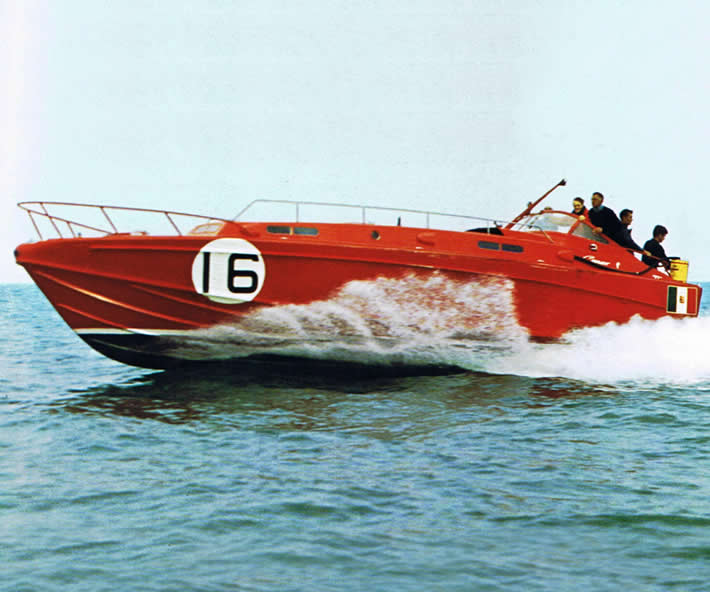
Ultima Dea was a good boat for its time, very comfortable and strong. Maserati engines were masterpieces, having a huge power output considering their cylinder capacity: more than 430 horsepower per 5,4 liter. The hull was made of laminayed mahogany. Ultima Volta was built by a team of carpenters from Anzio who later set up a company, giving rise to Cantiere Delta. For the first time the aspen was introduced in hull costruction and, even though the boat hasn’t finished neither of the two races in which it took part, it was an out of the ordinary one.
Adagio was, instead, another fast cabin speedboat “cigarette” type, built by Delta of Fiumicino in 1981. F100, a 32,80 meters long yacht designed by Gerhard Gilgenast, was built in 1983 by CRN boatyard in Ancona for long navigations. It was equipped with an helipad and a very powerful tender boat. The F100 has created a trend which resists even today, that of yachts which trace lines of a classic tugboat repurposed for leisure use.
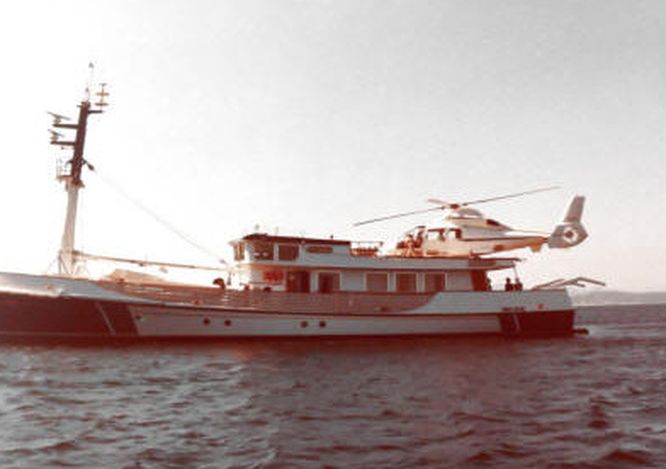
“Every summer we spent a lot of time on the outskirts of Calvi, in Corsica, with the boat F100. On those occasions, one of the Avvocato’s favorite pastimes was that of getting to, with the Boston Whaler, the fishing boats while they were pulling up the nets. The Avvocato really liked to buy fresh fish. One day we saw the boat of Joustin, nicknamed “the mobster” because he was wearing some big and flashy gold necklaces around his neck and plenty of rings on his fingers.
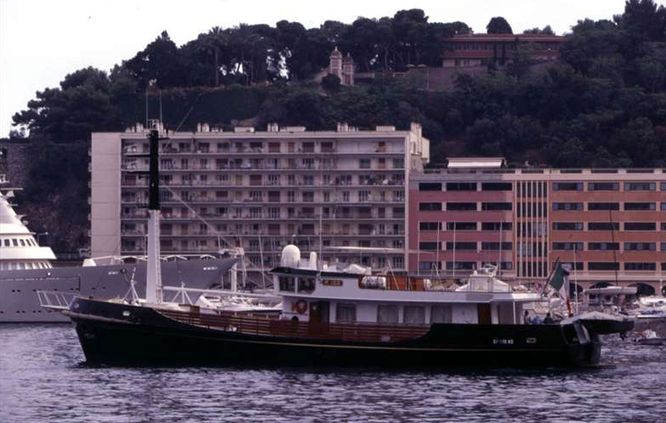
While we were getting to the boat, the Avvocato was asking about the price of the lobsters. I had bought them from Joustin just two days before and so I answered that for sure: «130 Francs per kilo». We flanked the boat and the Avvocato was conversing with the fisherman. In the end he took the lobsters and told me: «pay them and let’s go». I realized that the price Joustin gave him was 110 Francs per kilo. I got angry but, before I could rant about “the mobster”, the Avvocato said: «since when the Corsicans rip you off this way?» (Based on the book “At sea with the Avvocato”, by Alfredo Locci).
The Volture, a speedboat built in Australia, was Agnelli’s last boat. Dolce Vita is the term more suited to Riva Aquarama as it means the joy of living, the amusement, lightness, of which that legendary boat was a symbol. In the ‘60s it was the will to be carefree at a time when Italy was enjoying consumerism after the hard work of the post-war, today however Dolce Vita became synonym for style of all who love to enjoy nice things.
The concept of the cruise was far away, the speedboat was for whizzing on water in the spirit of a convertible, reaching a bay or the other to take a bath, sunbathing lying down in aft on mattresses. That was a full day or a few hours, the point was not the journey but the experience. Celebrity clients, enthusiasts of Aquarama, contributed a lot to all this. Gianni Agnelli was the very first one, as in 1962 the first model of the boat was baptized by him at the helm for the test drive, but are countless actors and industrialists who over time had one of them, becoming its ambassadors.
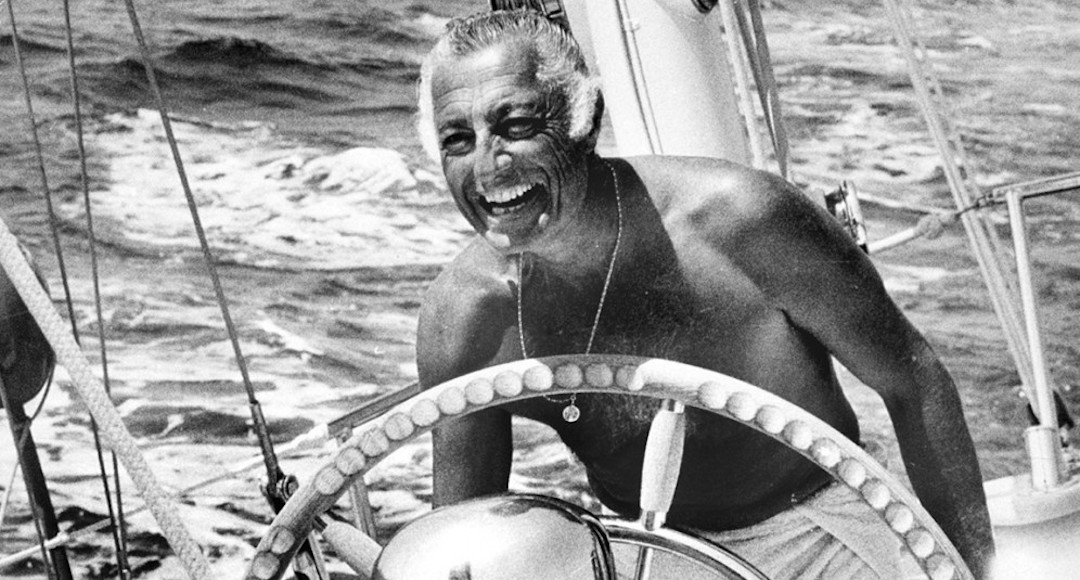
«Of course, you only had to see it to be attracted by its winding and elegant lines, by the beauty of threaded mahogany and chrome details. In short anyone understood the unique design, together with the value of build quality. But were celebrities in Cote d’Azur at the time to create the myth of Aquarama», Antonio Gervasoni, grandson of Carlo Riva, recalled.
«Brigitte Bardot had plenty of them, the industrialist Gunther Sachs gave them to her. They loved to whizz on the one which they called Dracula, dressed as vampers…», he remembers, preserving the historical memory also because of the family picture archive with the jet set at the time. «To say nothing of Anita Ekberg who, for hers Aquarama, asked, instead of iconic textiles ivory and turquoise, a zebra striped cloth whitch was specially made», everything immortalised by the paparazzi footage. In short, an imaginary focused on the gratification and the aesthetic pleasure.
“Who was lucky to meet the Agnelli family, can only be moved watching the documentary on the story of the Avvocato released by Netflix. This is what has happened to who writes these lines, as I always felt blessed by fortune to have known this great man during the period of the management of Juve which he considered his creature, on a par with the Fiat. Having been close to him, being able to confront him, who was considered a teacher of life, provided you with those certainties that only people with great charisma know how to convey. Those images, those places frequented for a long time, the same people appeared in the film, took me back to the twelve years spent at Juventus and I feel no shame for saying that I couldn’t keep from crying. Two unimaginably great men, both he and his brother Umberto.
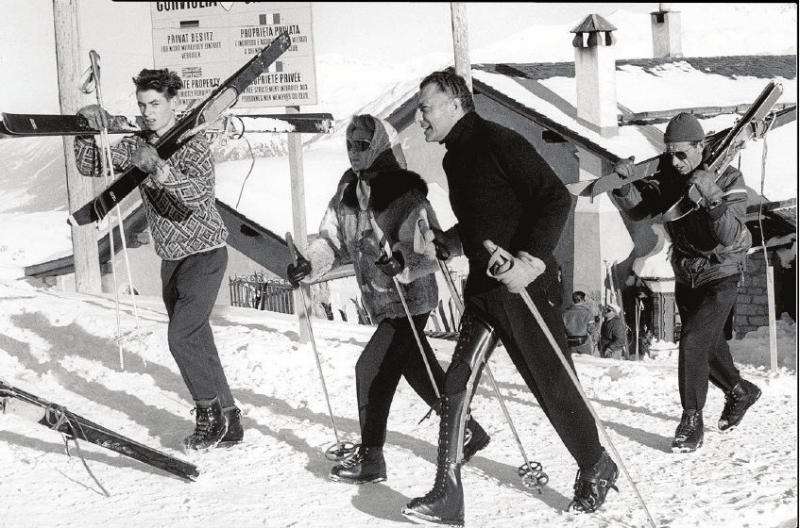
In all his manifestations, the Avvocato was pure charisma: his words never sounded as an order but were soothing as if they were, to have the honor and also the pleasure of talking to such a character gave you an extra kick and the courage to face the weirdness that life delivers at all times. In his talks the verb “must” has not existed, in its place there was always «what do you say?» And the speaker understood that something had to change.
He was protecting his employees like few others: at the time of Bribesville he discouraged with a few words those who ranted and were asking for the dismissal of some Fiat people implicated in the scandal: «I will defend my men till the last court level». Real man way of acting, unknown for most people, especially these days.
My entry at Juve together with Giraudo and Bettega was in 1994, the team was coming off eight years of failures to the point that the Avvocato decided to quit leaving the burden to his brother Umberto. We immediately won the championship, two years later the Champions. The environment, depressed at first, came back to dream and the Avvocato returned to have fun. Between me and him there was good chemistry, he called me every morning at six, often to give me the press news he already knew despite the time, sometimes to ask me if there was any news.
He was a happy man and said to gladly speak with me because I did it as well. And it made me very happy. In the early days at Juventus misunderstandings might arise among us due to my little knowledge of the environment, but the Avvocato, noble lord like he was, has always understood good faith.
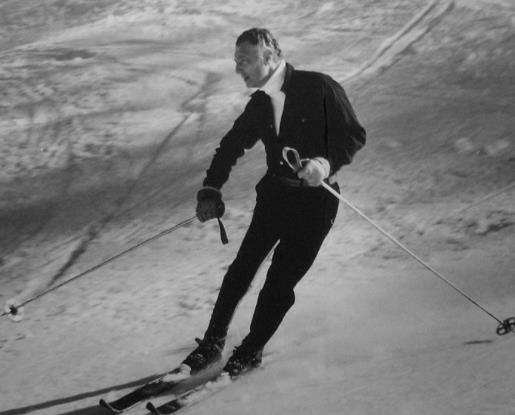
Like when, went to New York for surgery, he had the Fiat switchboard call me several times: «it’s Agnelli house, the Avvocato would like to speak with you». I never answered, thinking it was a friend from Cuneo who could perfecty imitate him, even hanging up the phone, because I thought that Agnelli, being in America, had insufficient time to think of me. And I was wrong. When he was back in Italy, speaking with his brother Umberto, just told him: «but how weird man that Moggi is, I have phoned him many times and he has always hanged up on me». Cleared up the misunderstanding, good laugh and getting on with the job.
On the other hand the family motto was: «as long as the work amuses you don’t feel fatigue» and we were perfectly interpreting the saying. The day of clarification was a great pleasure, equal however to the pain that we felt a few days before he died, when he called me and Lippi to his house. We spoke for an hour about Juventus and, saying goodbye to one another, he used a few words which left us petrified: «I wonder if I could see you again». I shall never forget them.
His successor was Umberto, good manager, a numbers man, the one who hired us at Juventus knowing to have formed an executive team of respect. They were proven correct by the results because precisely those managers brought the Signora (the Lady) on top of the world beating at Tokyo the River Plate, for Umberto’s happiness and for the one of his super-fun wife Allegra. He called me “commander” and I was honoured by his esteem.
Sadly the century disease took him away at an early age, a terrible loss for Juventus and for the limping Fiat of that time, which he was trying to get back on track. We were coming back from Milan after signing the contract with the new coach Fabio Capello, it was about 10:00 pm, Giraudo, who was driving, asked me to call the “dottore” (Umberto Agnelli) to let him know it: they answered that he was dead.
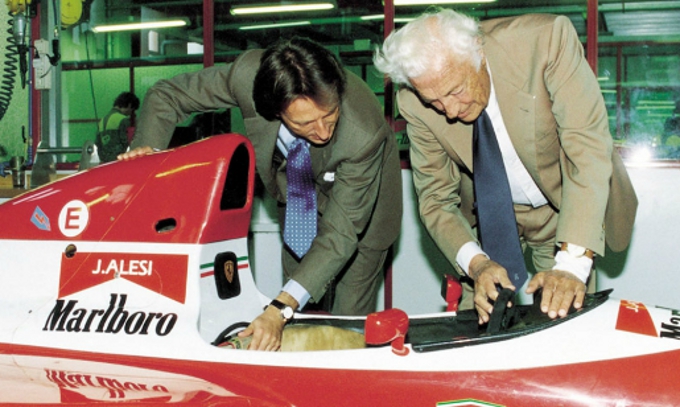
Since then a deafening silence accompanied us in the wild ride towards his villa in “la Mandria”, the son Andrea welcomed us and hugging each other we could merely cry. Allegra told that on the same day, at 17:00, helping him to take a bath, asked Umberto who it was the new coach of Juve and he, making the gesture of who doesn’t want to talk (a hand over his mouth), told her: «I can’t… otherwise Moggi gets angry».
With him ended the work of the “Triade” at Juve: other people wanted to take his spot. Now his son Andrea is emulating his actions: with his advent at the presidency Juventus restarted to win, six consecutives championships to date, almost to make you think that father and uncle from the sky protect him from who, critics and reluctant to work, would like him to fall. Maybe even to give Juve everything that was taken unfairly from it in addition to penalize those who took advantage of it.” Luciano Moggi

Gianni Agnelli in Monaco in 1984.
“It is now ten years since the passing of Avvocato Agnelli, someone who was decisive in the history of Ferrari and has been a constant reference point first for our Founder and then for me. I well remember incredibly difficult moments which our company has been living and how important it was his support. Ten years ago we named after him the single seater F2003-GA, which raced and won both championships in Formula 1 and those successes had therefore even more special value for each of us.
Personally, despite a decade being passed, I still miss the Avvocato Agnelli very much. He taught me to love our country and, at the same time, to look beyond his borders valuing it worldwide. To be able to constantly confront him, to share his extraordinary curiosity and his vision of what was happening in the world was an amazing privilege. Luca di Montezemolo, former chairman of Ferrari Spa
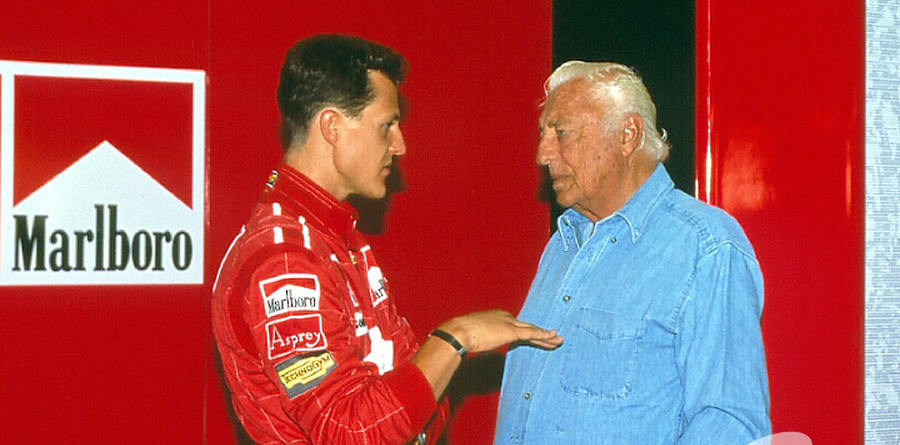
“He would never admit but he knew he was the prince of Italy. He was the international image of Italy, the most charming man in Italy. He was really the epitome of what should be an Italian. Very polite, good with women, exuberant just enough but without exceeding. Stable at a time of instability. He was really a prince.” Michel David Weill, banker, former chairman of Lazard Frères and former member of the board of Fiat.
Gianni Agnelli’s funeral gathered the biggest crowd the city of Turin ever seen. Diego Novelli, former communist mayor of Turin, said: “they brought the coffin on the roof of Lingotto and 500.000 Turinese went up to the famous circuit where Agnelli’s coffin was, like Muslims go to Mecca.”
And Gianni’s sister Maria Sole concluded citing a comment by the people of Turin about his brother: “when things were very bad, in Turin, we could hear his helicopter which was flying over the city and it made us happy because we knew he was coming.”
Videos



Comments
Authorize to comment